Germany is the closest to us from European countries, despite all the wars and disagreements. The Russian diaspora in Germany is one of the most numerous, and in the history of Russia the Germans left quite a noticeable trace.
Contents
- Visa to Germany
- Germany: maps with cities and places of interest
- Munich and its surroundings: places of interest and places to go
- Attractions in Bavaria: castles, the most beautiful cities and places
- Cologne - Bonn - Dusseldorf
- Cologne - Bonn - Dusseldorf:distance, how to get
- Cologne - Bonn - Dusseldorf: attractions
- Berlin: where to stay, what to visit, attractions
- Baden-Baden: attractions what to see
- The most beautiful cities in Germany
- Cruise on the Rhine
- Video. German mentality
- Video. What do the Germans think about Russians, part 1?
- Video. What do the Germans think about Russians, Part 2?
Visa to Germany
Germany is perhaps the most strict of the Schengen countries in terms of issuing a visa. The Germans, as is well known, are very scrupulous people, therefore the documents submitted for the visa are checked by them with special care.
Any inconsistencies can cause additional questions, they more often than others recheck the information specified by the applicant, and long-term visas are issued only if there are grounds( unlike, for example, Italians who easily stamp multivisa for most tourists).
For detailed information on the rules for issuing a visa to Germany, visit the official German representative offices in Russia. Such centers are in Moscow, St. Petersburg, Novosibirsk, Yekaterinburg and Kaliningrad. Submission of documents takes place on a territorial basis.
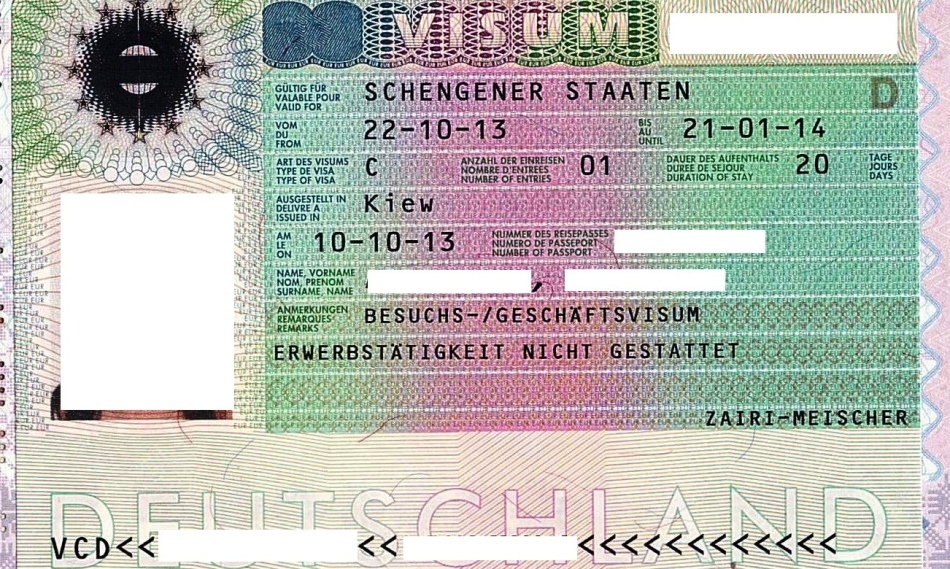 Visa to Germany
Visa to Germany What to look for when applying for a visa to Germany:
If you are planning to receive a multivisa, you must attach documents to the visa application confirming the intention to visit the country several times( hotel reservations and tickets for subsequent trips, or invitationfrom relatives for subsequent trips, or an invitation from partners, in which it will be indicated that you are expected more than once).Otherwise, the German Consulate will issue you a visa strictly under the terms of the next trip.
When issuing the certificate from the place of work, make sure that the income that is indicated there covers the time of your stay in Germany( on average, you need to indicate the income at the rate of 75 euros for each day of stay in the country).If the consulate finds your salary too small, you may be refused a visa because of insufficient funds. The same goes for the help from the bank.
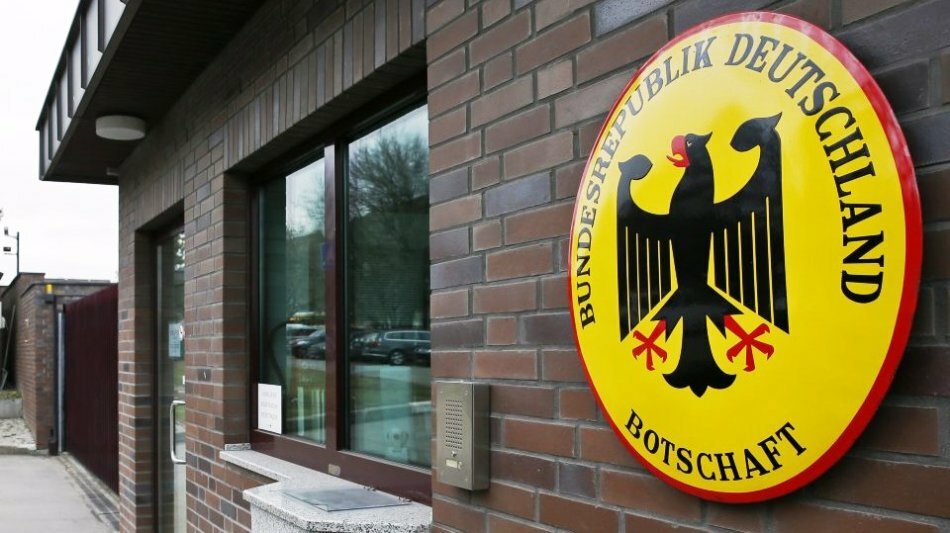 German Embassy in Moscow
German Embassy in Moscow If you receive additional income not related to your work activity, you can attach copies of documents confirming such income( a copy of the contract for the provision of your property for rent, payment of dividends, etc.)
Very important together witha package of documents to provide so-called evidence of the intention to return to their homeland: copies of documents for possession of movable real estate, the presence of underage children, and so on.
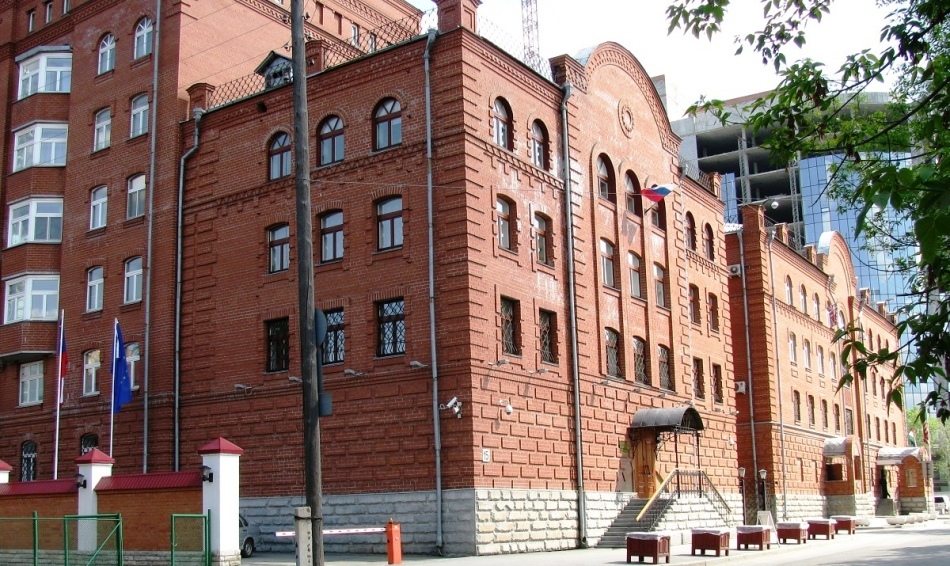 German Consulate in Yekaterinburg
German Consulate in Yekaterinburg If you provide a hotel reservation from Booking.com and similar sites, make sure that your reservation is valid for the entire term of your documents in the German Consulate. Employees of visa services often apply to hotels for confirmation of the information provided by the tourist.
To obtain a visa for a frequent invitation, it is necessary to provide the original of such an invitation to the consulate( calculate the timeframe, taking into account the postal delivery to Russia).If you are invited by the organization, a copy of the invitation is sufficient, but additional documents( an extract of the registration of the enterprise in the German state register, a copy of the passport of the person who signed the invitation) should be attached to it.
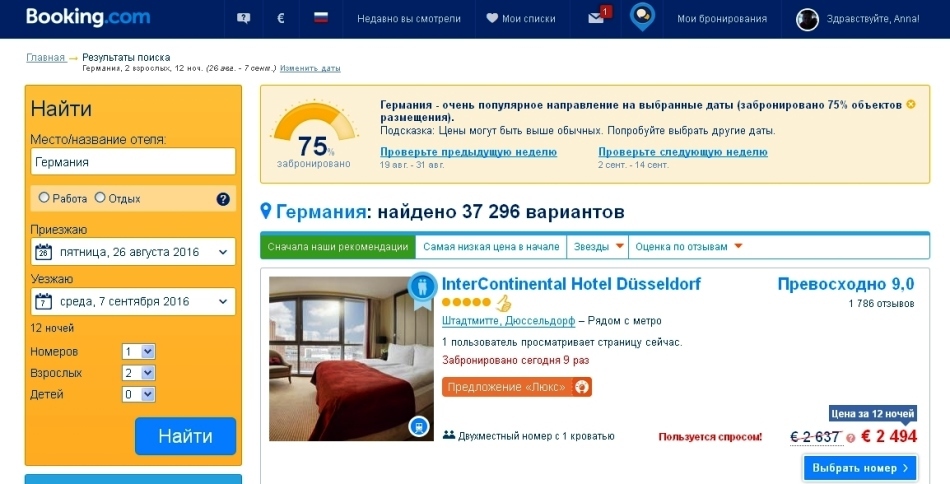 Site for self-booking hotels in Germany booking.com
Site for self-booking hotels in Germany booking.com Germany: maps with cities and attractions
Detailed maps of Germany in Russian with points of interest, transport hubs, main resorts and many other objects you can find here. Maps are available for download.
Maps of major cities and regions in Germany: map of Berlin, map of Hamburg, map of Düsseldorf, map of Dresden, map of Cologne, map of Munich, map of Stuttgart, map of Bonn, map of Bremen, map of Hannover, map of Nuremberg, map of Frankfurt, map of Bavaria.
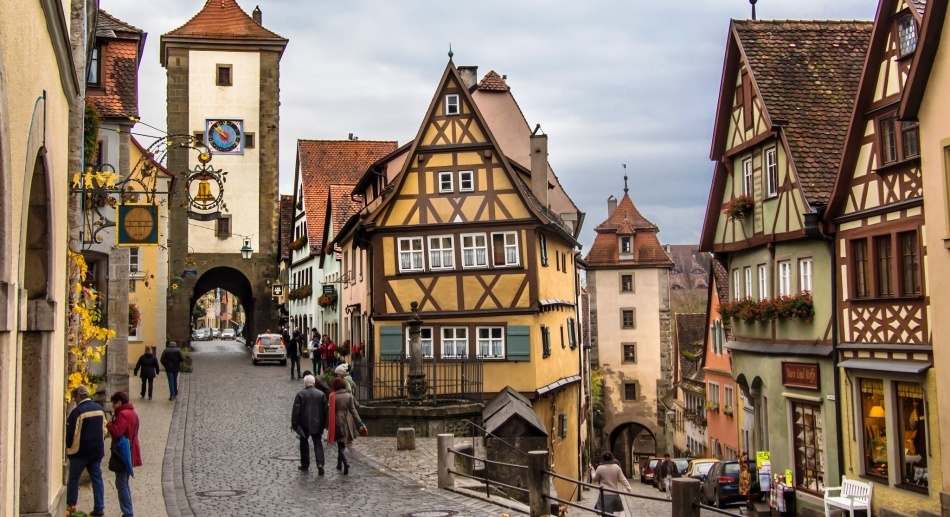 ROTEBURG, Germany
ROTEBURG, Germany Munich and surroundings: attractions and points of interest where to go
The Town Hall is the most popular building of the city, which is located on the Marienplatz square in the center of Munich. Every day at 11 o'clock under the battle of the chimes on the tower an entire representation of mechanical figures is played, which move and tell about the life of medieval Bavaria. For tourists, access to the observation deck at the top of the tower opens from where a beautiful view opens up.
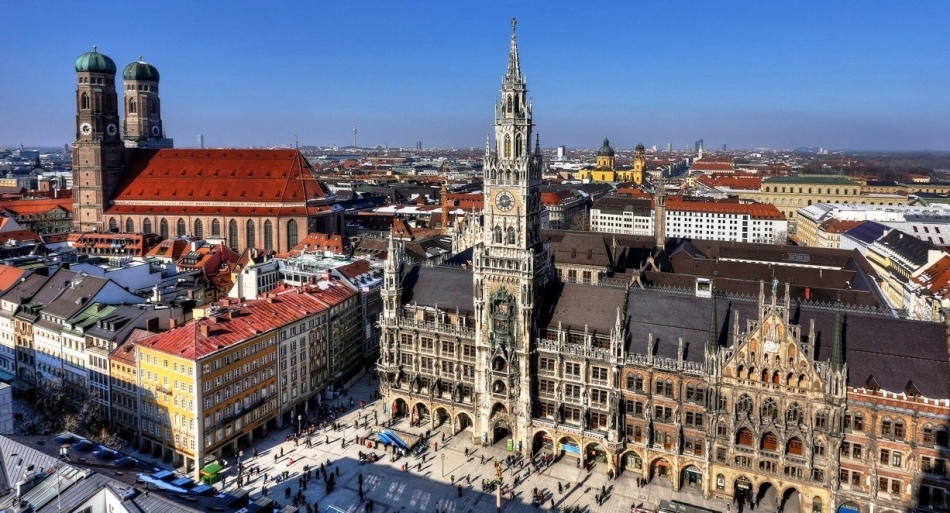 City Hall, Munich, Germany
City Hall, Munich, Germany Galleries and art museums in Munich .There are more than a hundred different exhibitions and museums in the city, in which works from the early Middle Ages to the present are presented.
The most remarkable of them are: The Old Pinakothek( works by Rembrandt, Da Vinci, Titian, Rubens, El Greco, Durer and others), New Pinakothek( paintings by Gauguin, Claude Monet, Munch, Van Gogh, Toulouse-Lautrec and others)Arts( Kandinsky, Andy Warhol, Picasso, Kokoshka, etc.)
 Old Pinakothek, Munich, Germany
Old Pinakothek, Munich, Germany Beer establishments in Munich .Bavaria - a real beer garden, where for centuries their special traditions of making a foamy drink are maintained, and the Bavarian brewers are rightly considered to be one of the best in the world. The most famous pub in Munich - Hofbräuhaus - was opened in the 16th century. This is a huge beer restaurant, designed for several thousand visitors and enjoying great popularity among the public.
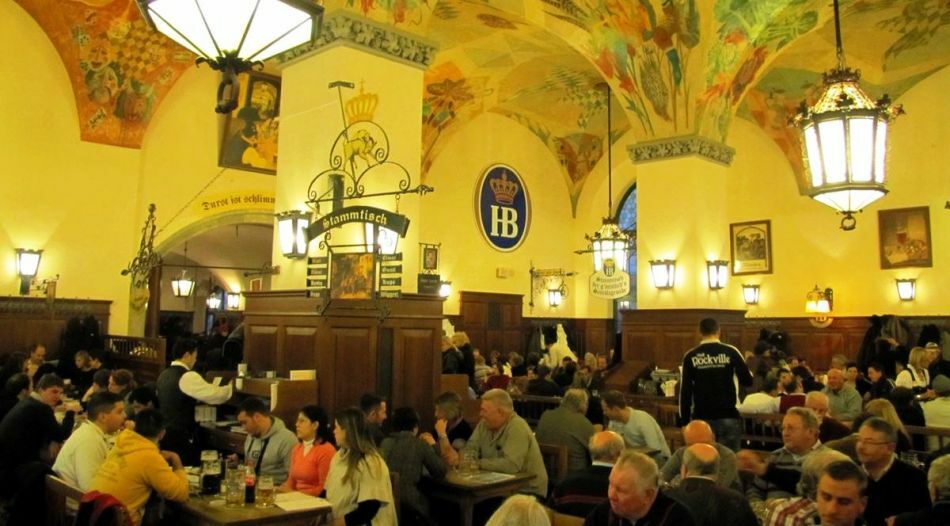 Beer restaurant Hofbräuhaus, Munich, Germany
Beer restaurant Hofbräuhaus, Munich, Germany Quarter Schwabing is a region of artists, writers and musicians. The streets of Schwabing still retain the atmosphere of old Munich( unfortunately, urbanization leaves fewer and fewer authentic corners in the city), and the workshops of local artists make a walk around Schwabing even more interesting and informative.
 Quarter Schwabing, Munich, Germany
Quarter Schwabing, Munich, Germany River Isar .The picturesque quiet neighborhoods of Munich, along which the Isar River flows, is a great place for exploring the city. Here there is a unique bridge, which is not located across, but along the river Isar. On the islands in the middle of the river there are parks and museums.
For example, on the island of Prater you will find the Alp Museum and a magnificent park with many original buildings, and on the island of Museums you can visit several interesting expositions, the most notable of which is the German Technical Museum.
 Embankment Isar river in Munich, Germany
Embankment Isar river in Munich, Germany The BMW museum is a huge exposition telling about the history of the development of the industrial giant of the German car industry. The museum presents unique specimens of cars and motorcycles from different eras, airplanes, interesting technical findings and much more.
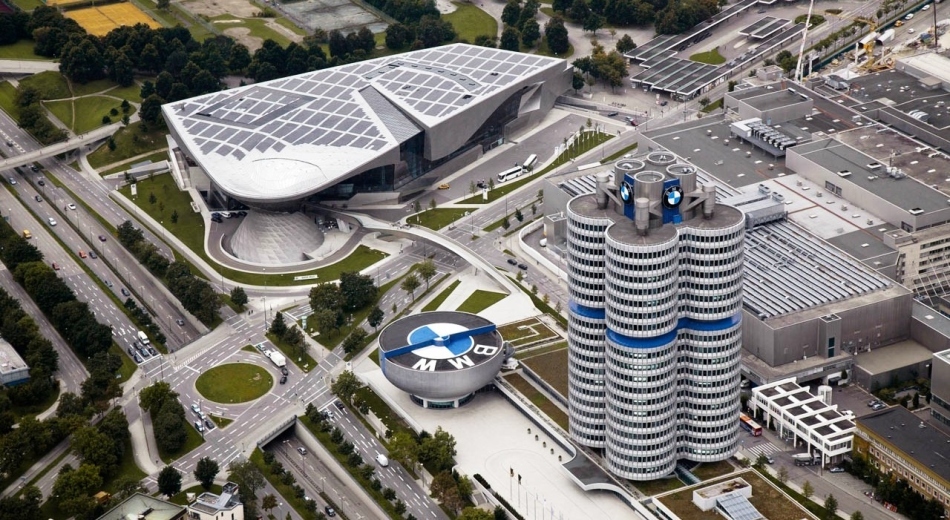 BMW Museum in Munich, Germany
BMW Museum in Munich, Germany Dachau - a concentration camp, created in 1933, immediately after Hitler came to power. The first prisoners were the Germans themselves - political opponents of the Nazis. Subsequently, the sad list of Dachau victims was enriched by numerous representatives of "inferior" races and groups of people from all over Europe: Jews, Slavs, Roma, mentally ill, communists and clergymen.
Also Dachau is notorious for the fact that the inhuman medical experiments of the Third Reich were conducted here. The Dachau Museum has preserved numerous buildings and furnishings of that time.
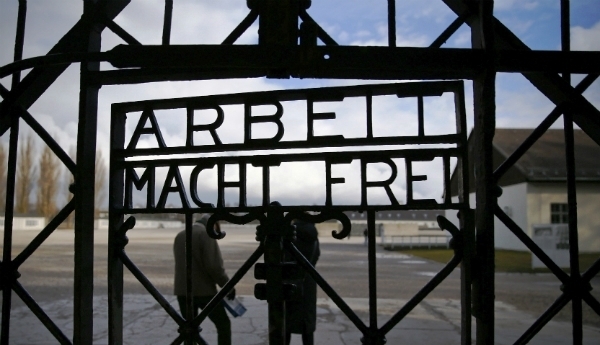 Entrance gate of the Dachau camp, Germany. The inscription reads "Labor makes it free".
Entrance gate of the Dachau camp, Germany. The inscription reads "Labor makes it free".Nymphenburg Castle - one of the largest royal palaces in Europe, was built in the XVII century in honor of the birth of the heir of the governor of Bavaria Ferdinand specifically for his wife Henrietta Adelaide of Savoy. The castle is considered one of the most luxurious in the whole of Germany.
The Gallery of Beauties inside the palace is very interesting - a series of 36 portraits of the most beautiful women of Bavaria of that time. A magnificent park in French style is located around the palace.
 Nymphenburg Castle in Munich, Germany
Nymphenburg Castle in Munich, Germany The Bauhaus is a famous art school in the vicinity of Munich, which was founded in the days of the Weimar Republic in 1919.The style worked out in the Bauhaus under the direction of Schlemmer, Kandinsky, Klee, Itten and others, had a great influence on the development of modern design and architecture.
For its time, the ideas of the Bauhaus were simply revolutionary, but precisely because of them we have styles of Hi-Tech, IKEA, modern laconic architecture and minimalism.
 Villa in the style of the Bauhaus in Munich, Germany Legoland
Villa in the style of the Bauhaus in Munich, Germany Legoland - Park entertainment , in which all facilities ( for except attractions ) made of parts Lego . Park divided on themed areas different ages , have many interactive entertainment , mini - exhibitions , and whole series miniature copies cities Europe.
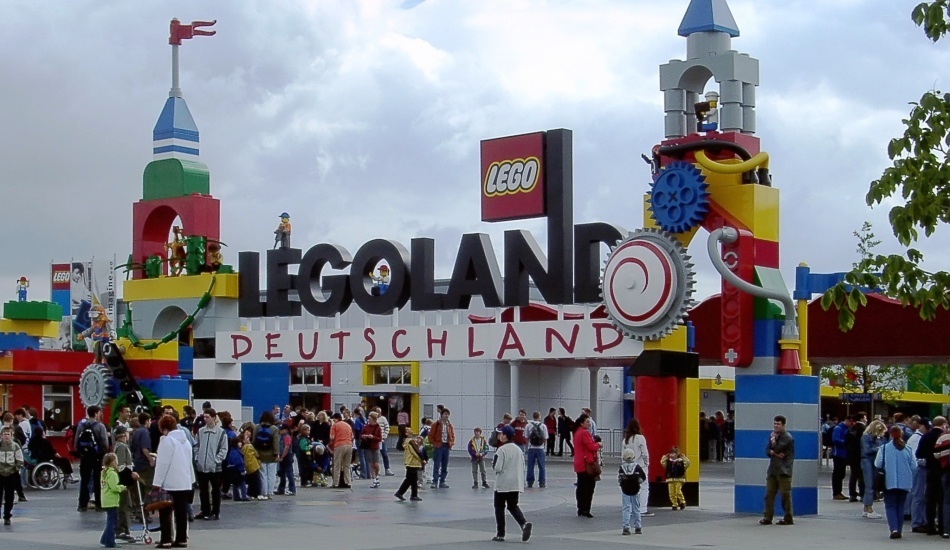 Legoland Park in Munich, Germany
Legoland Park in Munich, Germany The time difference between Munich and Moscow
is one hour
Bavaria attractions: castles, the most beautiful cities and places
Neuschweisten Castle is a prototype of the famous castle on the Walt Disney screensaver, a copy of which was recreated in Disneyland Park. It was Neuschweistein who inspired Peter Tchaikovsky to create the ballet "Swan Lake".
The creator of the castle, King of Bavaria Ludwig II, ordered its construction under the impression of Wagner's works, and fully reflects their mystical spirit and fairy-tale reality - it rather resembles the scenery for the performance than the real habitat of people.
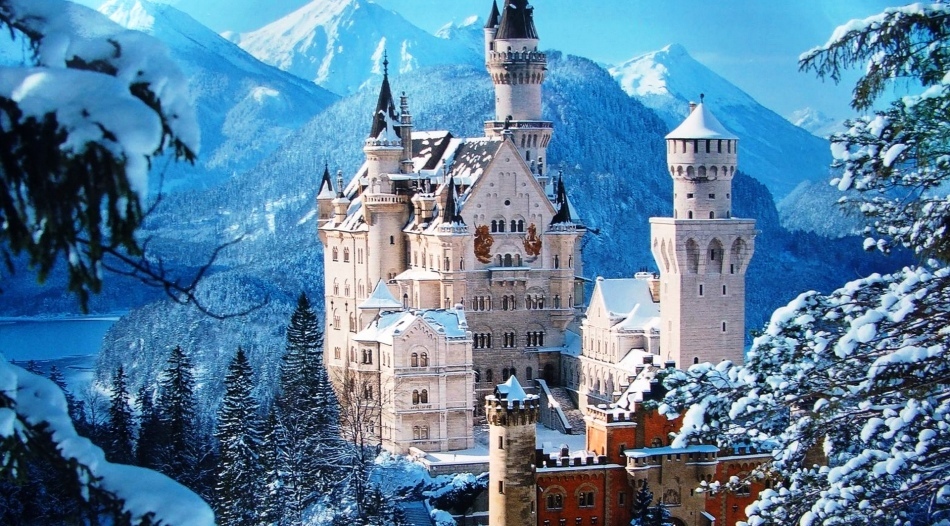 Neuschweißen Castle, Bavaria, Germany
Neuschweißen Castle, Bavaria, Germany Hohenschwangau Castle is the summer residence of the King of Bavaria Maximilian II.The castle was created under the influence of the legend of the knight Lohengrin - a medieval character, who together with his brothers was turned into evil swans by swans( remember Andersen's tale "Wild Swans"?).
Many elements in the decoration of the castle remind visitors of the swan motif of the legend: the fountain in the courtyard of the castle, the hall of the knight-swan and much more.
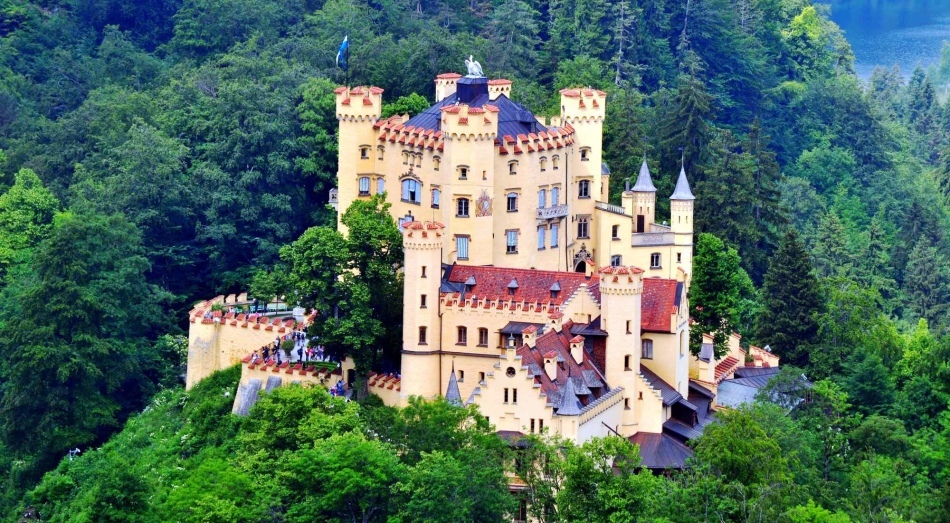 Hohenschwangau Castle, Bavaria, Germany
Hohenschwangau Castle, Bavaria, Germany Lake Königssee is the cleanest reservoir in the whole of Germany, a mountain lake with a unique climate that is accessible for visits at any time of the year. For the crystal clearness of the water and the picturesque banks of Koenigssee are often called the royal lake.
The lake is located in the territory of the Berchtesgaden National Park, and traditionally attracts a huge number of tourists. Not far from Koenigssee is the famous residence of Hitler "Eagle's Nest".
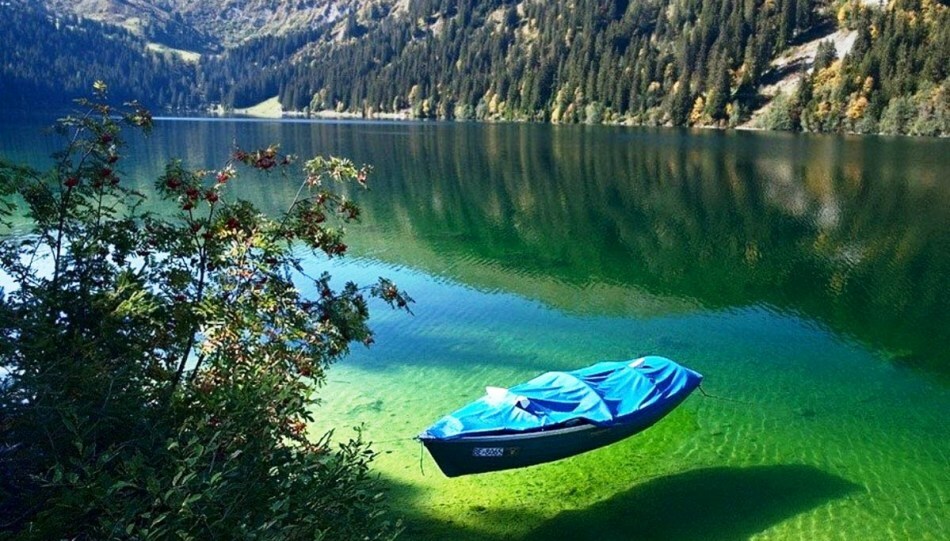 Lake Königssee, Bavaria, Germany
Lake Königssee, Bavaria, Germany Valhalla is a monumental memorial, stylized as an Ancient Greek temple. In ancient German mythology, Valhalla is the place of the heavenly dwelling of valorous warriors who fell in battles.
The Valhalla building was built at the beginning of the 20th century as a hall of fame for Germany's outstanding representatives in various fields: rulers, military leaders, artists, politicians, and so on.
It is noteworthy that among the busts installed in Valhalla, there are Russian figures, Germans born: Empress Catherine II, Field Marshal Barclay de Tolly, Count Dibich-Zabalkansky and others.
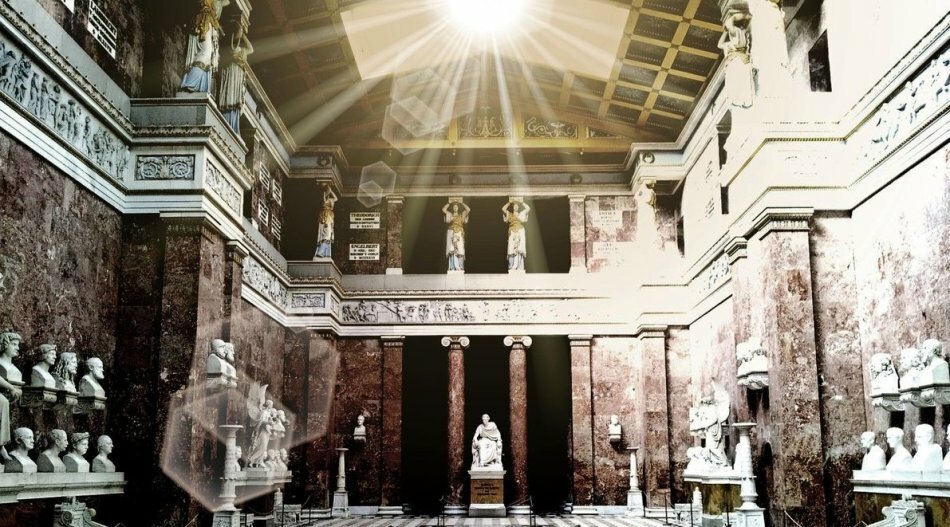 Memorial Valhalla, Bavaria, Germany
Memorial Valhalla, Bavaria, Germany Zugspitze is a mountain range that can be climbed by a ground funicular. From the tops of Zugspitze there is a panorama of several German cities( Stuttgart, Munich, Dresden), as well as the territory of neighboring countries( Italy, Austria, Switzerland).
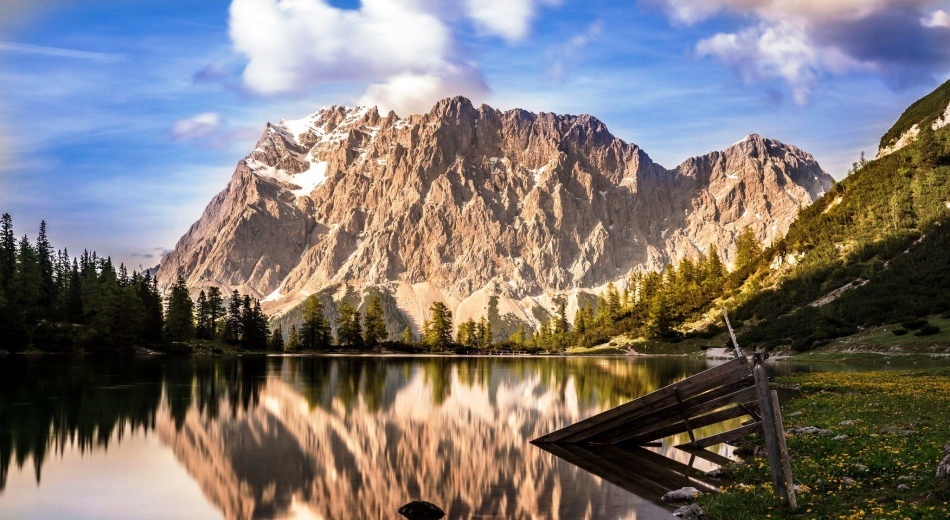 Mountains Zugspitze, Bavaria, Germany
Mountains Zugspitze, Bavaria, Germany Cologne-Bonn-Düsseldorf
Cologne-Bonn-Düsseldorf: The distance to get there
Cologne, Bonn and Düsseldorf are very close: the distance from Cologne to Düsseldorf is only 40 km, or 10-15 minutes drive away. Between Cologne and Bonn and at all 19 km, by the standards of Russian megacities these two German cities could be neighboring areas in some regional center.
Visually Cologne and Bonn are one, they have a common public transport system, and the inhabitants of Little Bonn often get a job in neighboring Cologne, where there are many more businesses and workplaces.
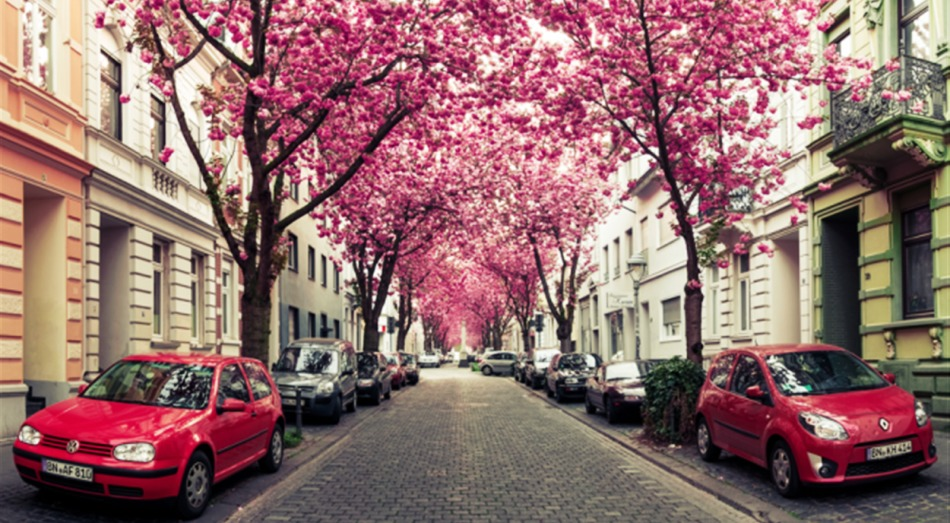 Cherry Street in Bonn, Germany
Cherry Street in Bonn, Germany The most convenient way to reach these three cities is via Düsseldorf Airport, one of the largest international airports in Germany, where you can easily find a route from anywhere in Europe and from major Russian cities.
Airport is very convenient in terms of navigation - there are a lot of pointers in different languages, most of the services are automated, which excludes any queues or confusion among passengers. From Düsseldorf Airport, you can easily reach the nearest cities and the city center. For more information, visit the Dusseldorf airport website.
 Airport in Düsseldorf, Germany
Airport in Düsseldorf, Germany The second nearest airport, the name of Konrad Adenauer, is located between Cologne and Bonn and serves two cities at once. In size, it is slightly smaller than in Düsseldorf, and is, rather, regional in character. The official site of the airport named after K.Adenauer can be found here.
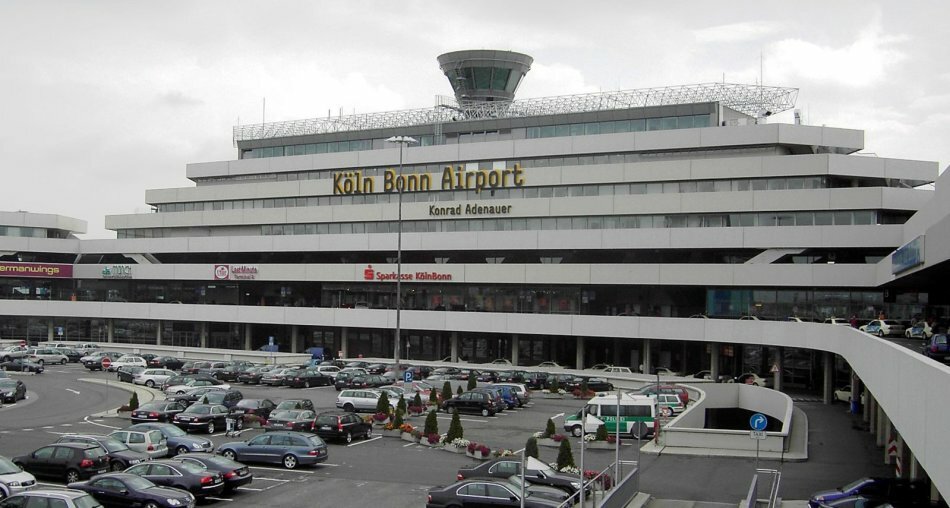 Airport Cologne-Bonn, Germany
Airport Cologne-Bonn, Germany If you travel by train, then it's easiest for you to get to the train station in Cologne. This is one of the largest transport hubs in Germany and Europe in general. The railway station serves almost all the main branches of Europe, provides passengers with the most modern services and is one of the main interchange points in the journey through Greece. More information can be found on the official website of the station in Cologne.
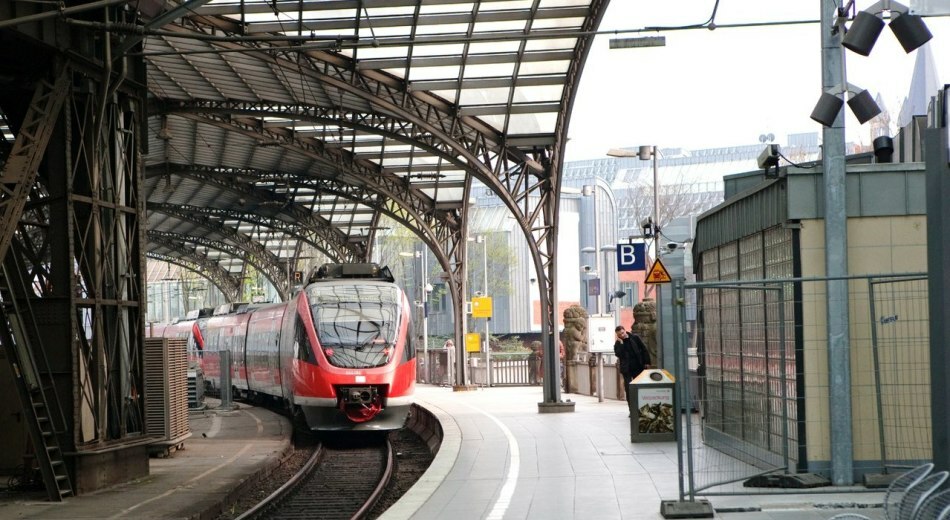 Main railway station in Cologne, Germany
Main railway station in Cologne, Germany Cologne - Bonn - Dusseldorf: sights
Cologne
Cologne is the capital of North Rhine-Westphalia, one of the largest and oldest cities in Germany. An amazingly beautiful city, leading its history from the times of Ancient Rome. True, all the historic buildings are now only a replicated copy of the original, because during the Second World War, carpet bombing of the United States and Britain literally wiped the city off the face of the earth.
The most interesting sights of Cologne:
The Dome Cathedral is the main Catholic cathedral of Cologne, one of the tallest buildings in Europe and the only building in the city that survived during World War II.
 Dome Cathedral in Cologne, Germany
Dome Cathedral in Cologne, Germany Cologne Museum is an exposition about the history of the development of perfumery, which has long and rich traditions in Cologne. Did you know that the French word "cologne" in the original sounds "eau de Cologne" and translates as "water from Cologne"?
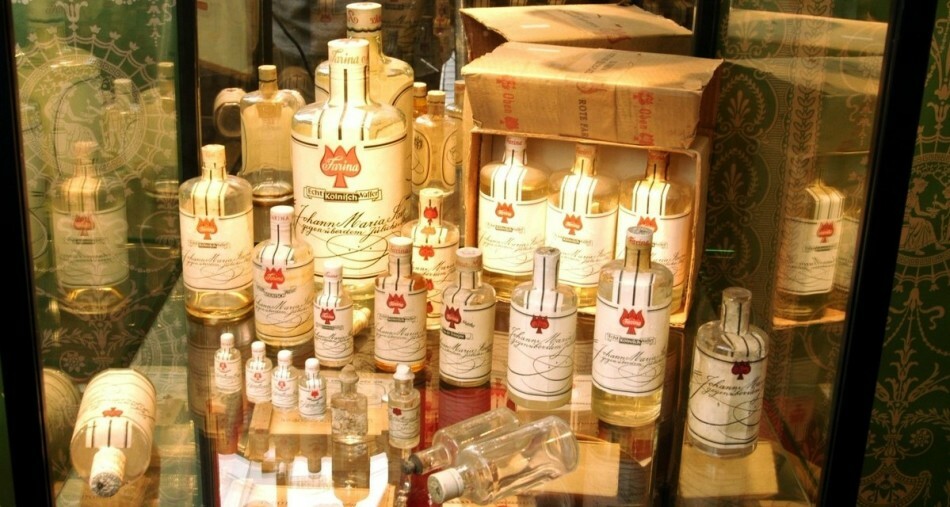 Cologne Museum in Cologne, Germany
Cologne Museum in Cologne, Germany The chocolate museum is an original building in the form of a floating ship on the island, where you can get acquainted with the history of the production of chocolate in Germany, taste the most famous brands, and also try yourself as a master chocolate-maker.
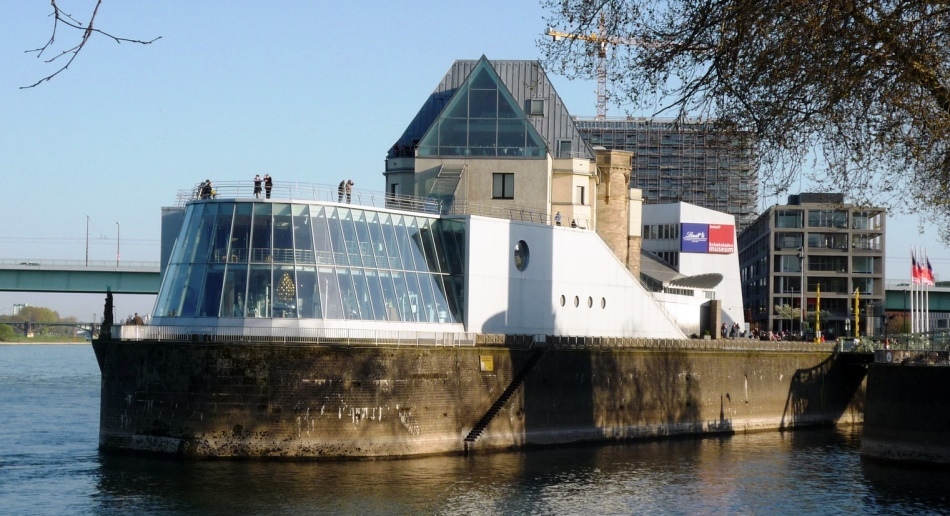 Chocolate Museum in Cologne, Germany
Chocolate Museum in Cologne, Germany Cologne City Hall Cologne is the main administrative center of the city since the Middle Ages, where you can visit the main hall and the gallery of outstanding inhabitants of Cologne.
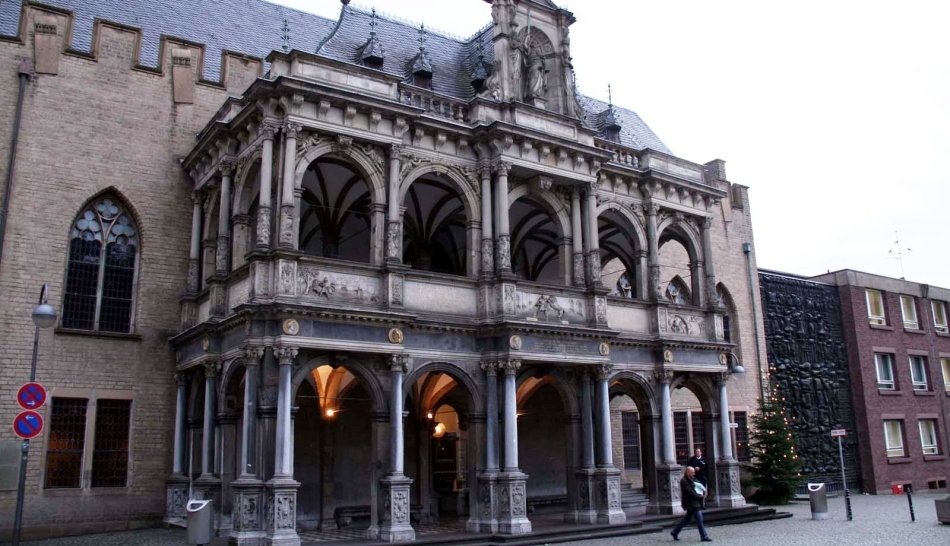 City Hall Cologne, Germany
City Hall Cologne, Germany The Nazi Documentation Center is a unique museum of the times of the Third Reich, which is located in the building of the former headquarters of the secret police and tells about the darkest period in the modern history of Germany. There is also a museum of the Gestapo, the former operating prison of the Nazis.
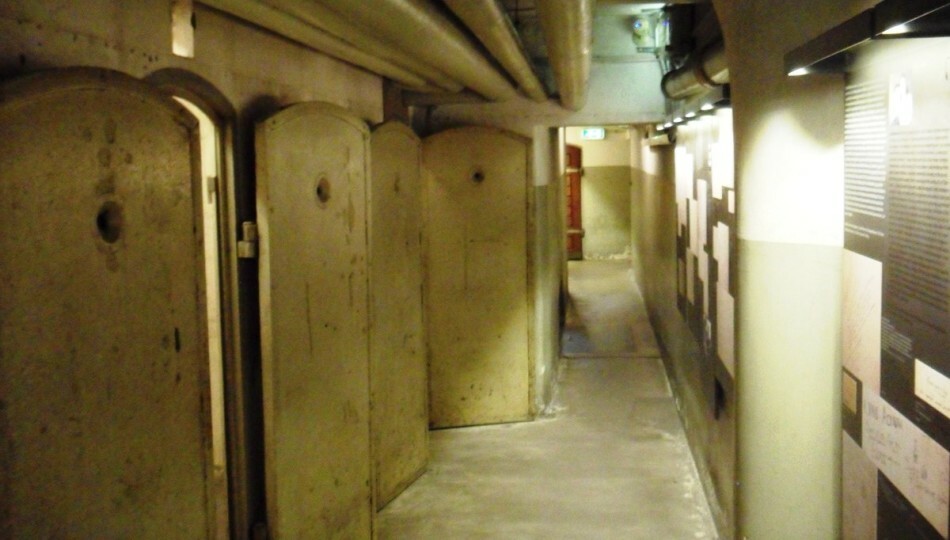 The Gestapo Museum in Cologne, Germany
The Gestapo Museum in Cologne, Germany The Cologne Ethnological Museum is a unique collection of Rautenstrauch-Jost, which presents exhibits from all over the world, revealing the essence of understanding the universe and place of man in different cultures and different historical epochs.
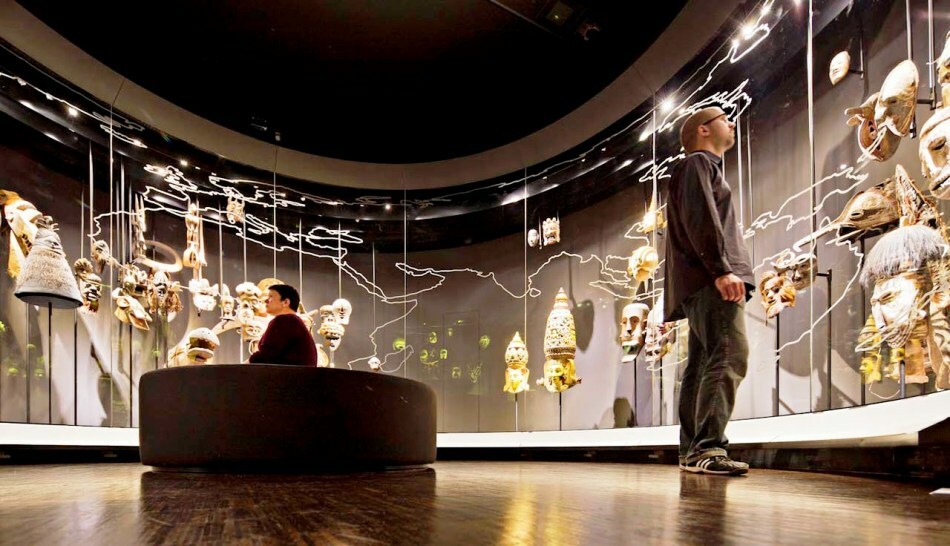 The Ethnological Museum of Rautenstrauch-Jost, Cologne, Germany
The Ethnological Museum of Rautenstrauch-Jost, Cologne, Germany Bonn
Bonn is a small medieval city, the former capital of Germany and the famous university center of Germany.
Beethoven House Museum is the place where Ludwig Van Beethoven was born and lived his first years. Here is collected the largest collection of personal belongings of the composer, as well as recreated the life and residential interiors of his family.
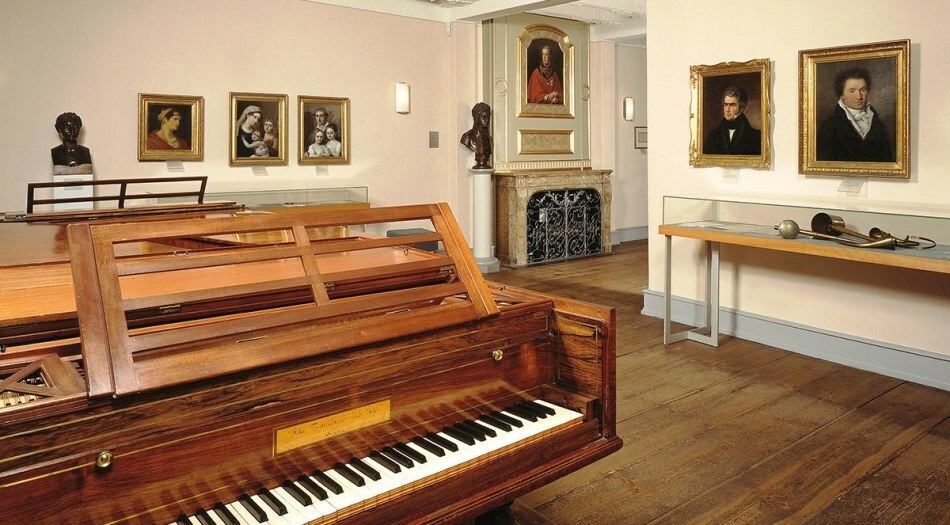 Beethoven House-Museum in Bonn, Germany
Beethoven House-Museum in Bonn, Germany Bonn Botanical Garden of Bonn is an impressive collection of rare and exotic plants. The garden is divided into zones, each of which recreates unique climatic conditions for plants from different parts of the world. Here you will find tropics and hot deserts, moist forests of South America and cold northern latitudes.
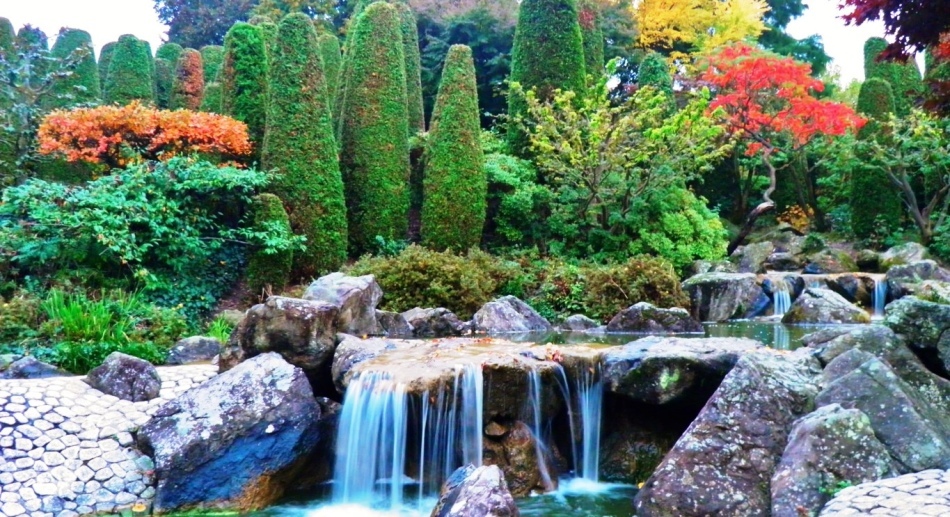 Botanical Garden of Bonn, Germany
Botanical Garden of Bonn, Germany Bonn University is one of the most prestigious educational institutions of the Old World, where many young people from all over Europe seek to enter. Seven Nobel Prize laureates, as well as Heinrich Heine, Karl Marx and Friedrich Nietzsche, emerged from the university walls. Access to the university building is open to all comers.
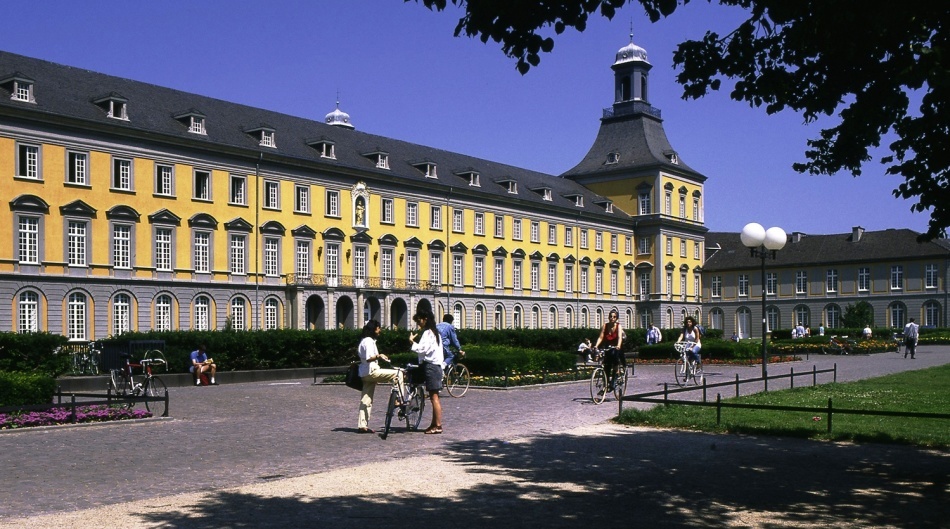 University of Bonn, Germany
University of Bonn, Germany The Castle of Godesburg is a fortress of the XIII century, a beautifully preserved building in the vicinity of Bonn. In the castle is open for visits to the knight's hall, wine cellar, tasting of Rhine wines and marriage ceremonies are held here.
 Castle Godesburg, Bonn, Germany
Castle Godesburg, Bonn, Germany Schumann House-Museum is the last refuge of the famous German composer who suffered from a mental disorder. Many works Shuman wrote in a state of delirium, which makes them particularly expressive and not like classical music.
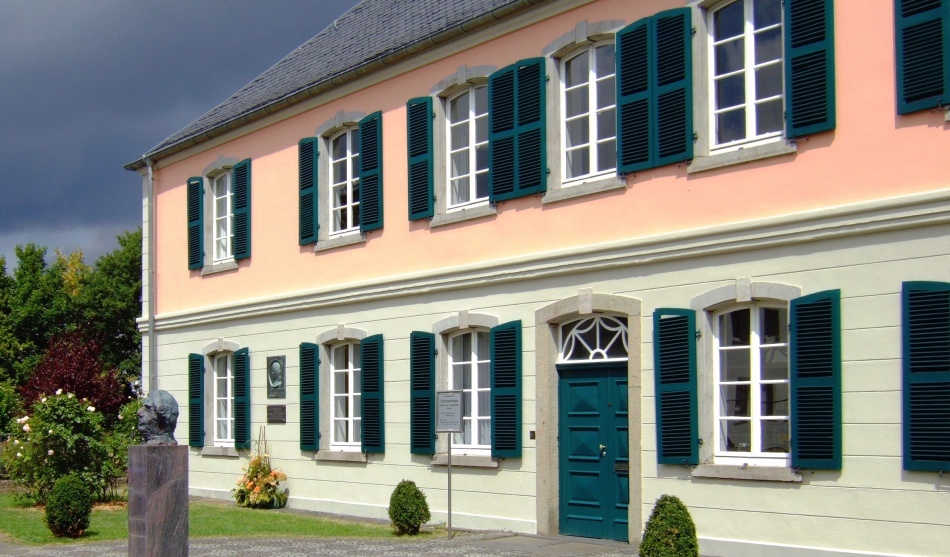 Schumann House-Museum in Bonn, Germany
Schumann House-Museum in Bonn, Germany The German Museum in Bonn is a unique exposition that tells about the life of the Germans during the Cold War, when the country was divided into two parts: the FRG and the GDR.There are food cards and household appliances of the 50-60s, personal belongings of ordinary citizens of those times.
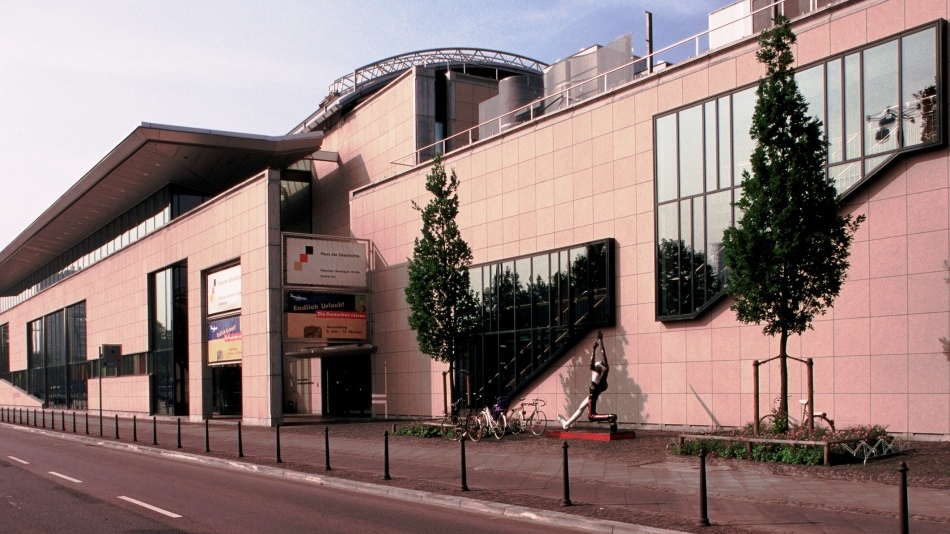 Museum of Germany in Bonn, Germany
Museum of Germany in Bonn, Germany Dusseldorf
Altstadt is the historical district of Dusseldorf, which is most popular with locals and visitors of the city. There are many shops, restaurants, excellent pubs, a large number of museums and entertainment.
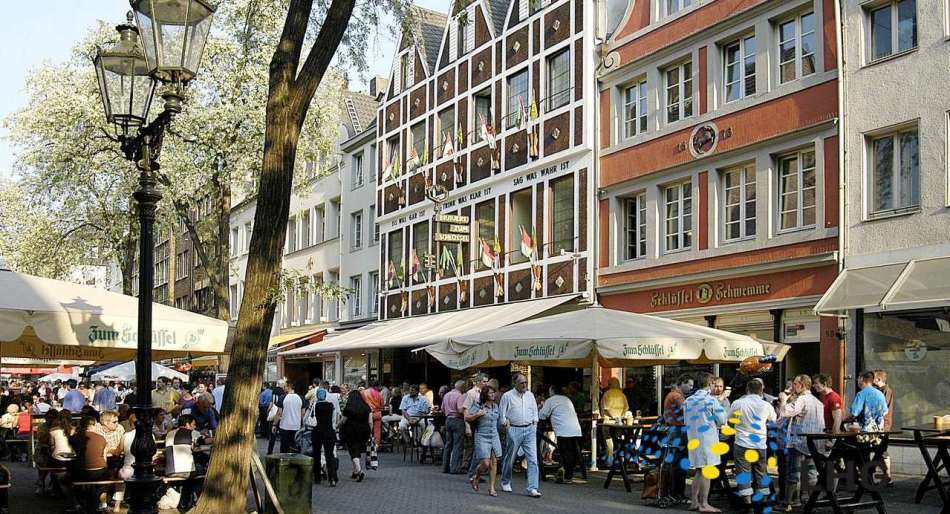 Altstadt in Düsseldorf, Germany
Altstadt in Düsseldorf, Germany Aqua-Zoo is a water zoo in Düsseldorf that presents almost all species of aquatic life and fauna of the main climatic zones of the planet. In addition to aquatic inhabitants, the aquarium contains reptiles, small birds and insects.
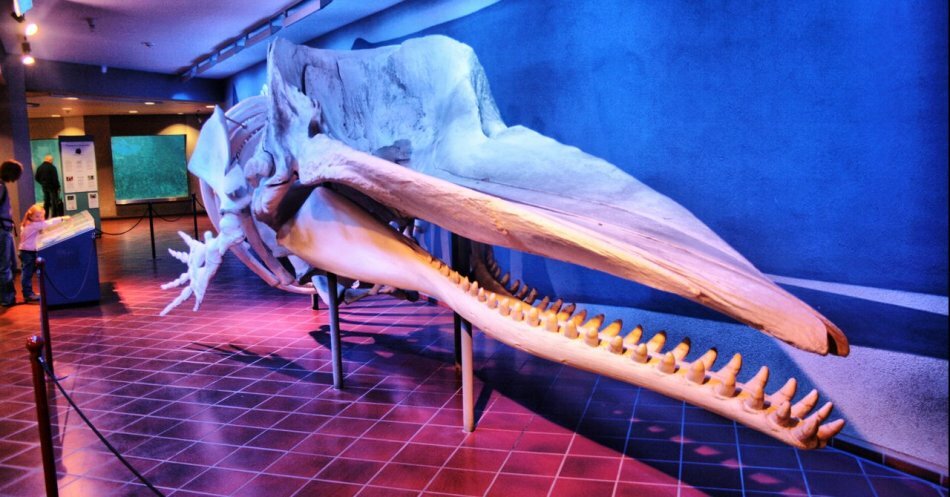 Aqua-Zoo in Dusseldorf, Germany
Aqua-Zoo in Dusseldorf, Germany The Goethe Museum is a collection of items that belonged to the great German writer, as well as the world's largest exposition dedicated to the history of creation and to the heroes of the immortal poem "Faust".
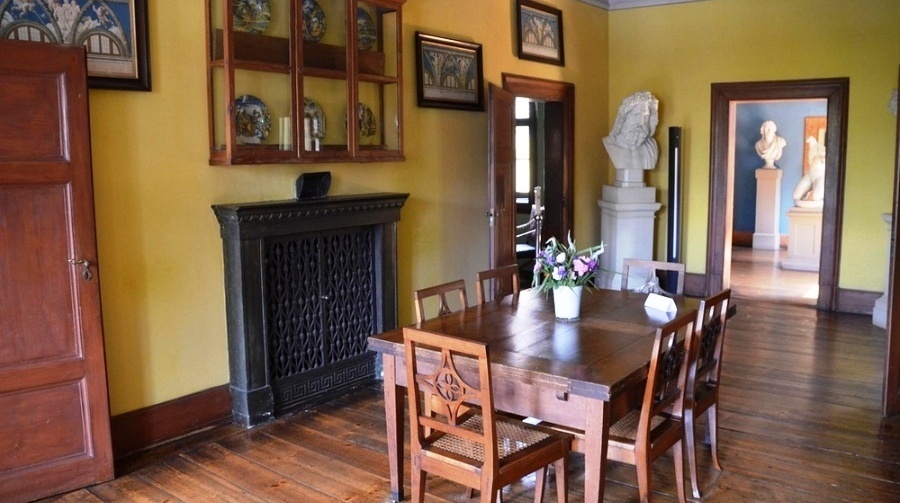 Goethe Museum in Dusseldorf, Germany
Goethe Museum in Dusseldorf, Germany Erenhof is a museum complex that includes a local history museum, an exhibition of contemporary art and the Kunstpalast Palace of Arts. Concerts of classical music, fashion shows and art exhibitions are constantly held in the premises of the complex.
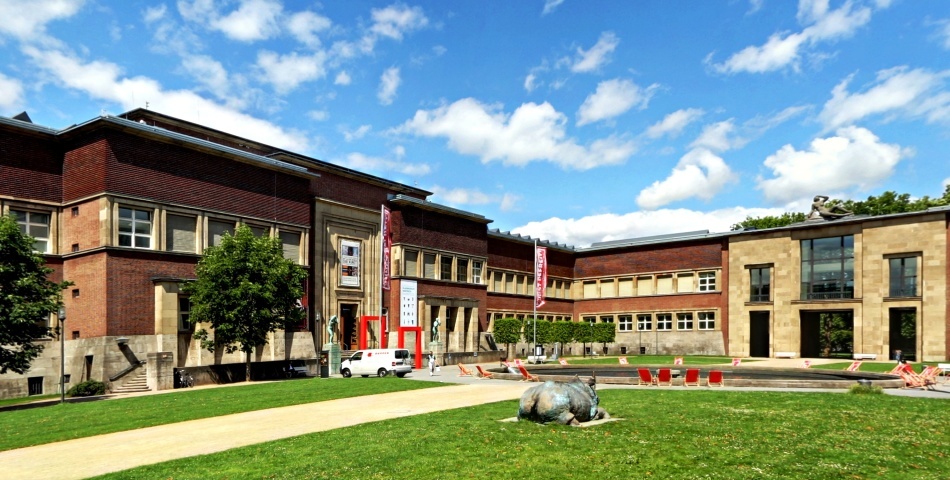 Ehrenhof Museum Complex in Dusseldorf, Germany
Ehrenhof Museum Complex in Dusseldorf, Germany Etienne Museum is an exposition about the history of ceramics, in which exhibits from all over the world are collected, the oldest being 8000 years old. The exposition was started by a private collection of L.Kh. Etienne, who bequeathed her to the city after his death in the beginning of the XX century.
 Etienne Museum in Düsseldorf, Germany
Etienne Museum in Düsseldorf, Germany The Royal Alley is the famous street in Düsseldorf, which houses the most expensive restaurants, boutiques and theaters. This is a real exhibition of luxury, brand names and wealthy spenders, descending on their whims fabulous sums.
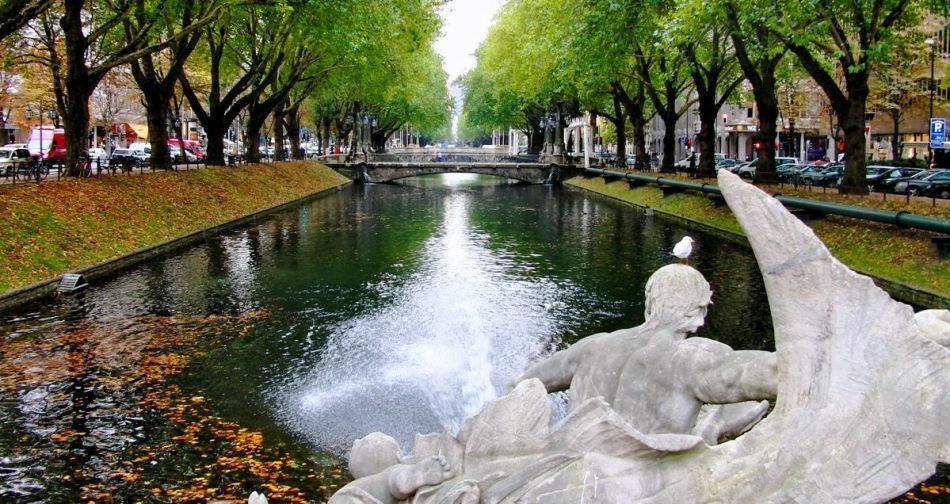 Royal Alley in Dusseldorf, Germany
Royal Alley in Dusseldorf, Germany Neanderthal is an archaeological museum in the vicinity of Düsseldorf, on the Düsselde River, in the Neander Valley. It was here in the XIX century that the remains of prehistoric culture were discovered, which later was called Neanderthal( in the place where the first exhibits were discovered).
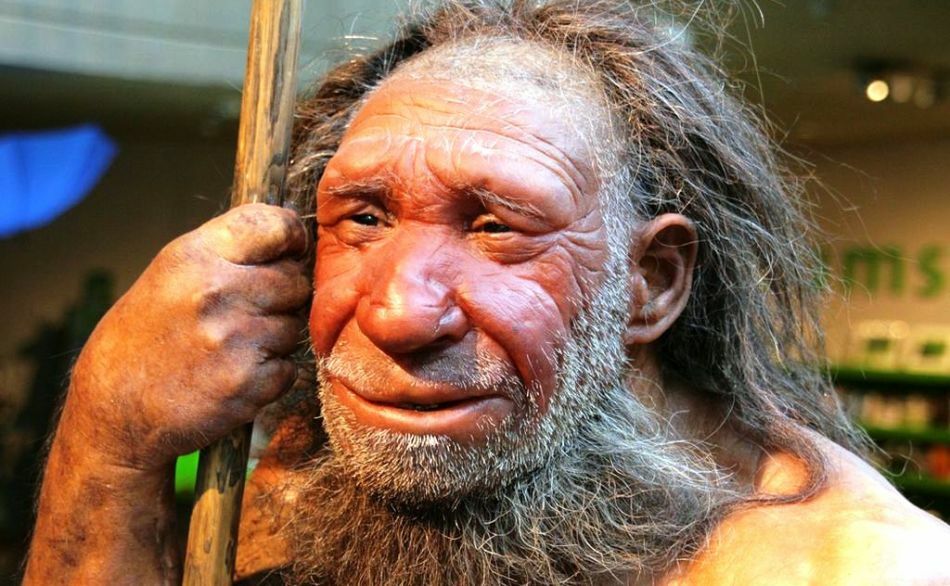 The Neanderthal Museum in Dusseldorf, Germany
The Neanderthal Museum in Dusseldorf, Germany Berlin: where to stay, what to visit, attractions
Berlin is the capital of united Germany, the most multicultural and democratic city in the country. Berlin is the most visited city in Germany, there is a huge selection of hotels from cheap hostels to luxury apartments. The most inexpensive ones are located in the districts of Berlin-Mitte and the Marx-Engels-Forum. For more information on availability and prices, please visit booking.com
Berlin's main attractions
The Brandenburg Gate is the most famous monument of the city, familiar to us on many postcards and historical shots of the Second World War. The monument was built in honor of the victory over Napoleon and is a typical European triumphal gate for the winners' parade.
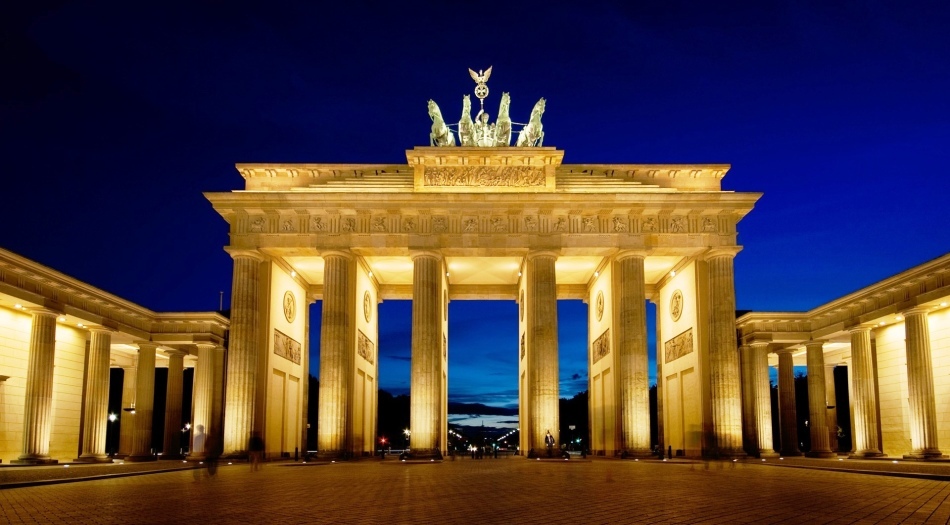 The Brandenburg Gate in Berlin, Germany
The Brandenburg Gate in Berlin, Germany The Reichstag is a historical building of the parliament, on whose walls the inscriptions of the 1945 winning soldiers have been preserved. The internal premises of the Reichstag are open to visitors for free, but this requires advance registration on the official website of the Reichstag.
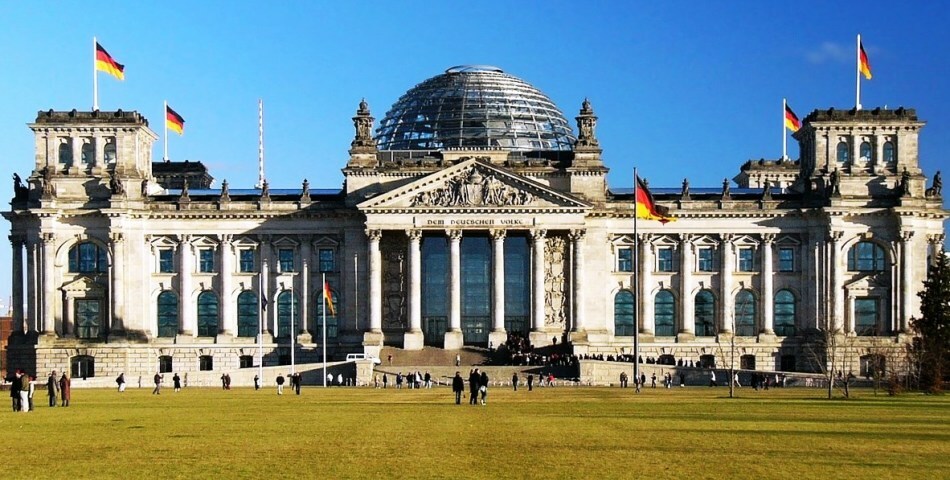 The Reichstag Building in Berlin, Germany
The Reichstag Building in Berlin, Germany The Berlin TV Tower is the tallest building in Germany, built during the GDR era. From the top platform of the TV tower, a spectacular panorama of Berlin opens up, and on the top of the tower there is a unique restaurant, slowly rotating around its axis.
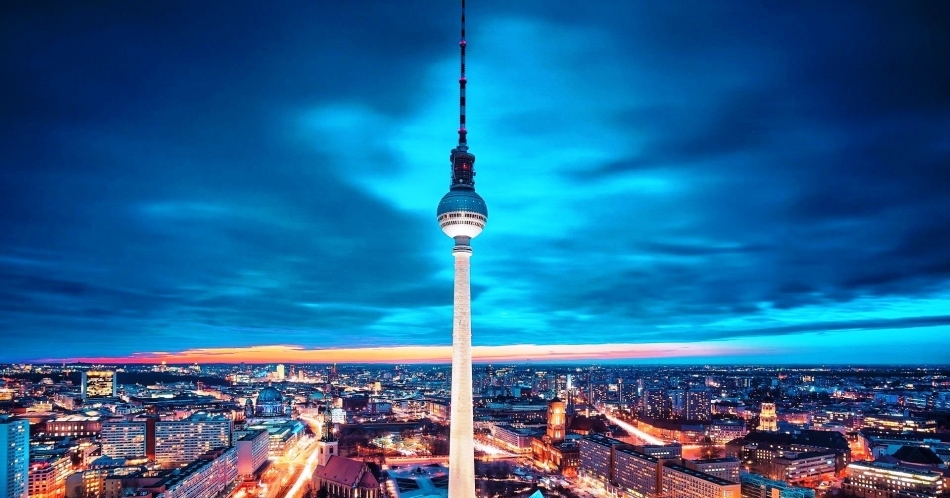 TV Tower Berlin, Germany
TV Tower Berlin, Germany Museum Island - a piece of sushi on the river Spree, which is located just five of the largest historical museums in Berlin. The largest of them is the Pergamon Museum , which represents a collection of unique archaeological exhibits from around the world.
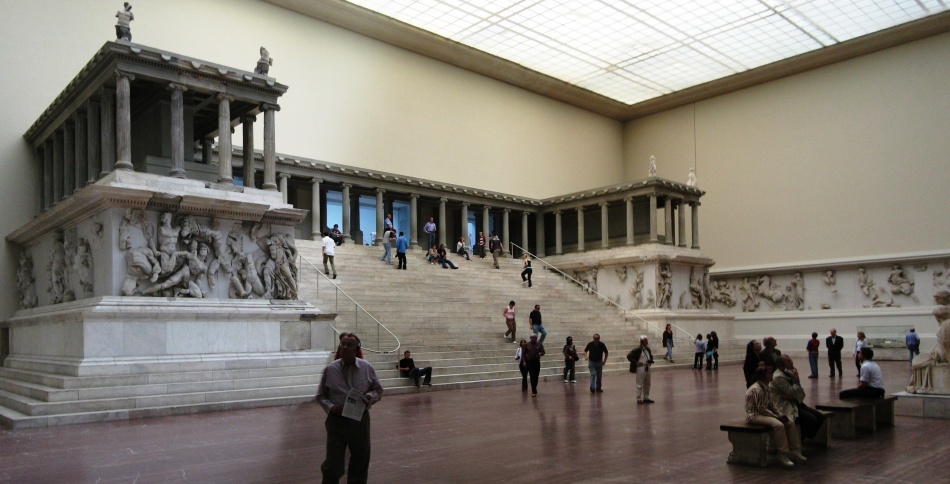 Pergamon Museum in Berlin, Germany
Pergamon Museum in Berlin, Germany Potsdamerplatz is the most modern square in Berlin. In the 19th - early 20th centuries, the square was a usual trading life, but it was completely destroyed in 1945 during the storming of Berlin, as it was here that Hitler's bunker was located.
In the following time, Potsdamerplatz was a wasteland in neutral territory between West and East Berlin, there was a border between the two states. Potsdamerplatz was rebuilt after the destruction of the Berlin Wall.
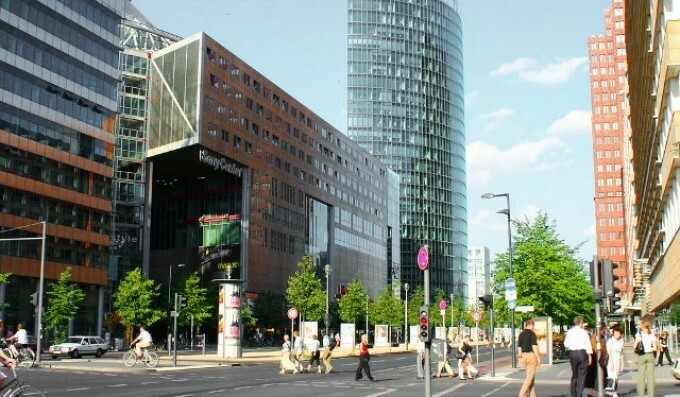 Potsdamer parade in Berlin, Germany
Potsdamer parade in Berlin, Germany The Berlin Wall is a piece of an insurmountable concrete fence that once divided Germany into the GDR and the FRG.The wall was erected literally overnight, dividing many families for many years, and stood almost 30 years. During its history, the Berlin Wall claimed the lives of many citizens( including children) who tried to illegally move to the opposite side.
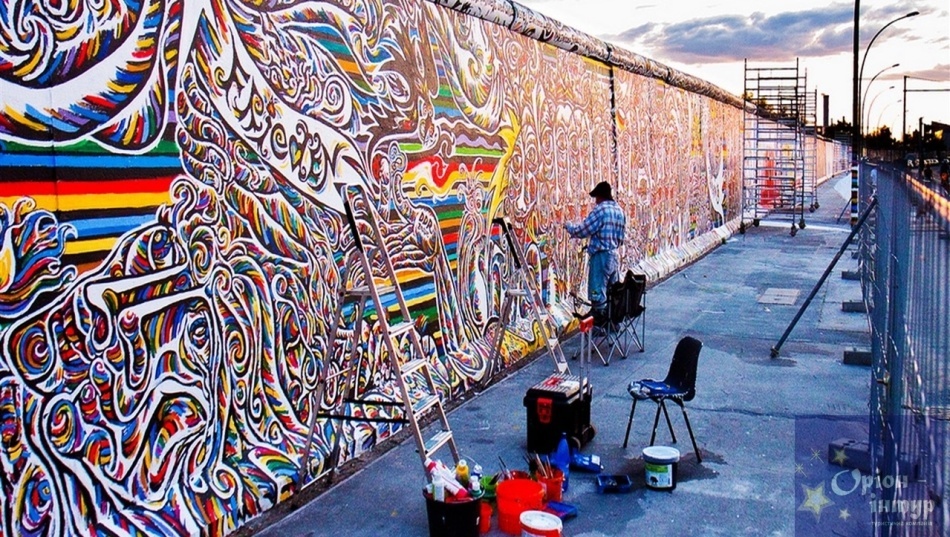 Berlin Wall, Germany
Berlin Wall, Germany Spandau is one of the oldest districts of Berlin with medieval streets and ancient buildings. The district is also notorious for the fact that the same prison Spandau was located here - the place of confinement of many state criminals, including members and leaders of the Third Reich.
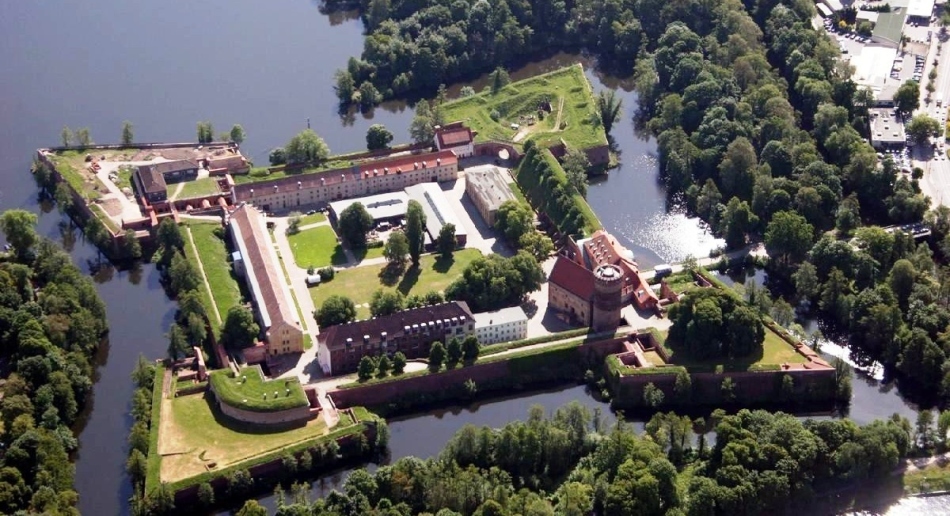 Spandau Citadel in Berlin, Germany
Spandau Citadel in Berlin, Germany Alexanderplatz is a historical place, the main square of the former GDR, as far back as 1805 named after the Russian Emperor Alexander I. The building of the square is a kind of mix of modern and historic buildings. The place is very popular with tourists and local residents, especially among young people.
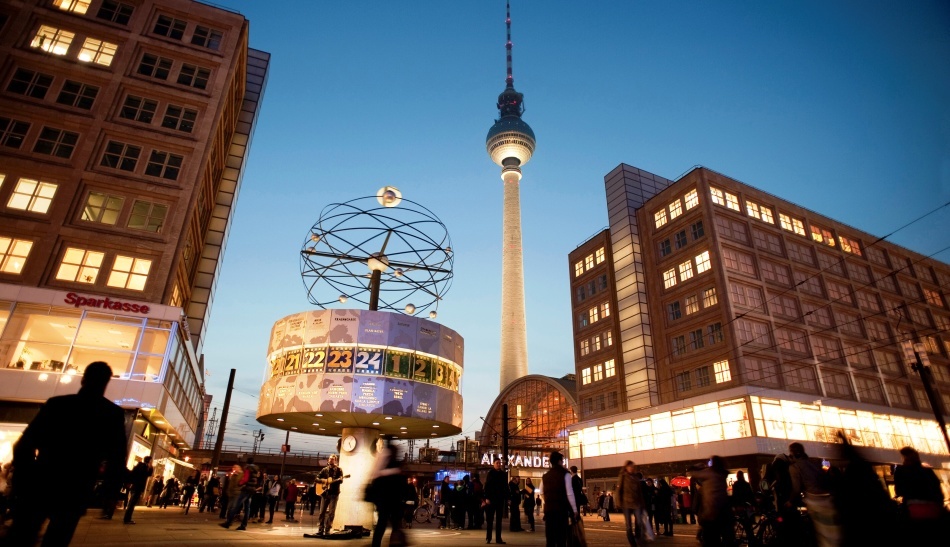 Alexanderplatz in Berlin, Germany
Alexanderplatz in Berlin, Germany Flea market Tiergarten - the famous antique market, which exists in Berlin for many years. The market is open every Sunday. Here you can find amazing things from jewelry to dishes, collection hats and postcards early XX century.
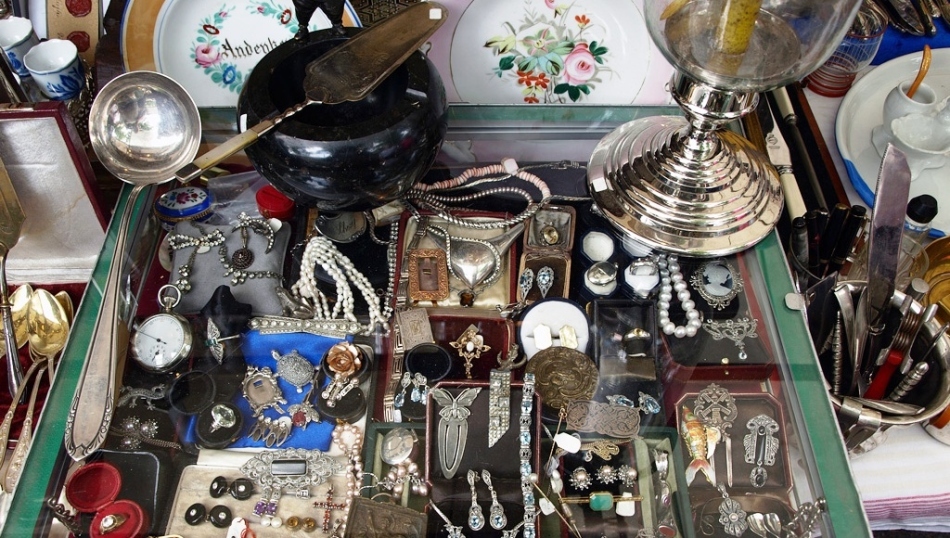 Tiergarten Flea Market in Berlin, Germany
Tiergarten Flea Market in Berlin, Germany The Jewish Museum is an exposition about the life of the Ashkenazi Jews - the largest European community, which was almost completely destroyed during the Second World War. The only museum in which doctors are constantly on duty, as the exposition produces such a strong impression that some visitors become ill.
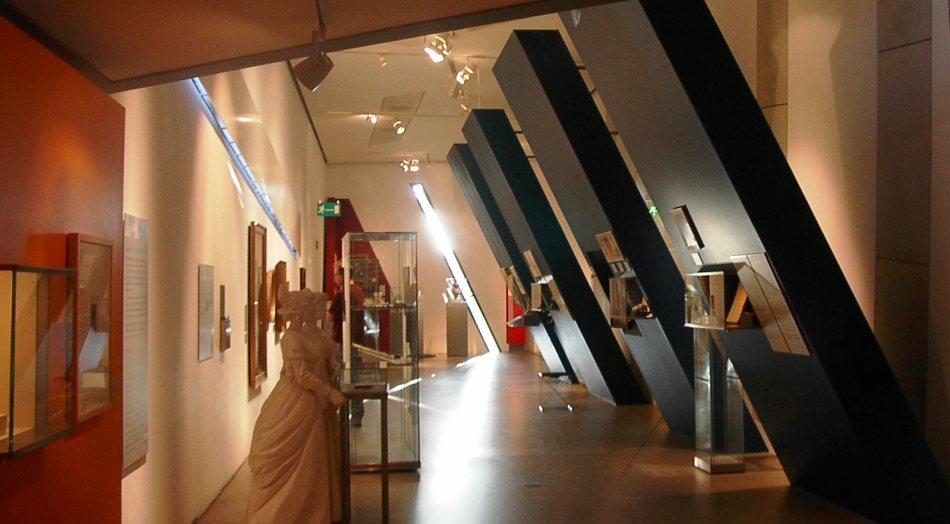 Jewish Museum in Berlin, Germany
Jewish Museum in Berlin, Germany Baden-Baden: attractions to see
Baden-Baden is Germany's most famous thermal spa, a favorite vacation spot for aristocrats of the 19th and 20th centuries. Among the visitors of that era, many names of the most famous houses of the Russian Empire, including members of the royal family.
Many balneological clinics are still effective and are in great demand among tourists, as they help in the treatment of a whole complex of diseases from general apathy to serious violations of various organs.
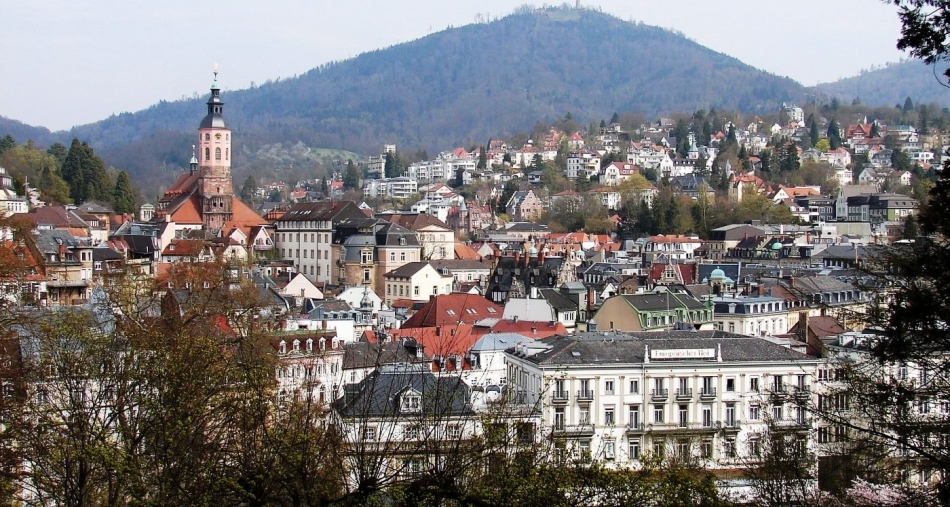 Baden-Baden, Germany
Baden-Baden, Germany Baden-Baden's most famous landmarks:
The Kurhaus is the famous casino in Baden-Baden, where many representatives of the noblest families of Europe have let down the fortunes. Here Dostoyevsky, an avid player who left all the conditions of his family, including his wife's dowry, left in Kurhaus blown to the dust. The casino is acting now.
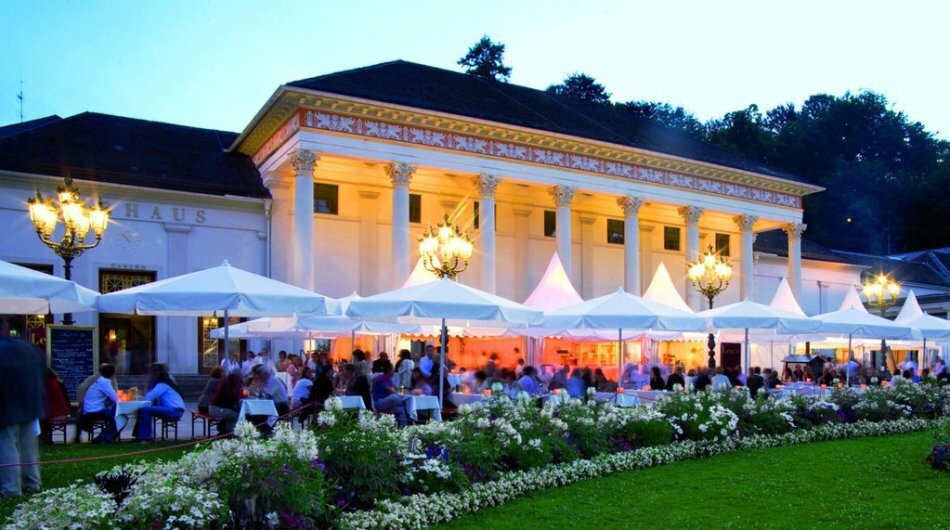 Casino Kurhaus in Baden-Baden, Germany
Casino Kurhaus in Baden-Baden, Germany The Roman baths - the first thermal baths of the city, built during the Roman Empire. This is a small museum in which you can learn a lot of interesting information about the life of Baden-Baden in ancient times.
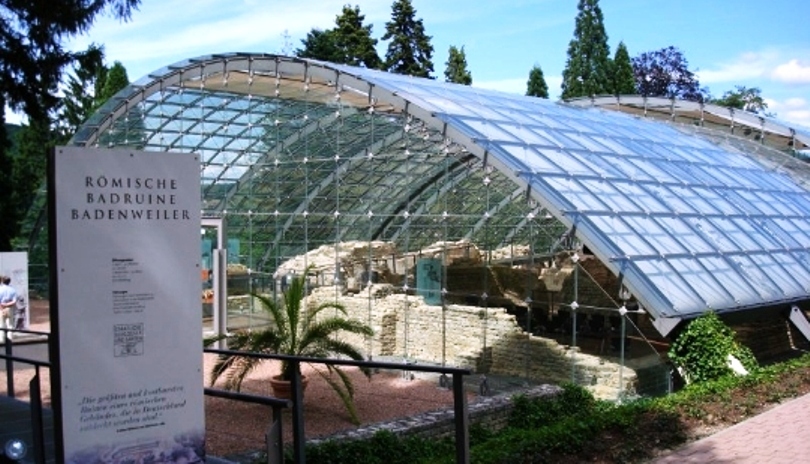 Roman baths in Baden-Baden, Germany
Roman baths in Baden-Baden, Germany Hohenbaden Castle is the former residence of the ruler of Baden, which was built 900 years ago. For inspection are fragments of structures, patios, protective walls. The castle is located on a mountain, so there are many routes for hiking around.
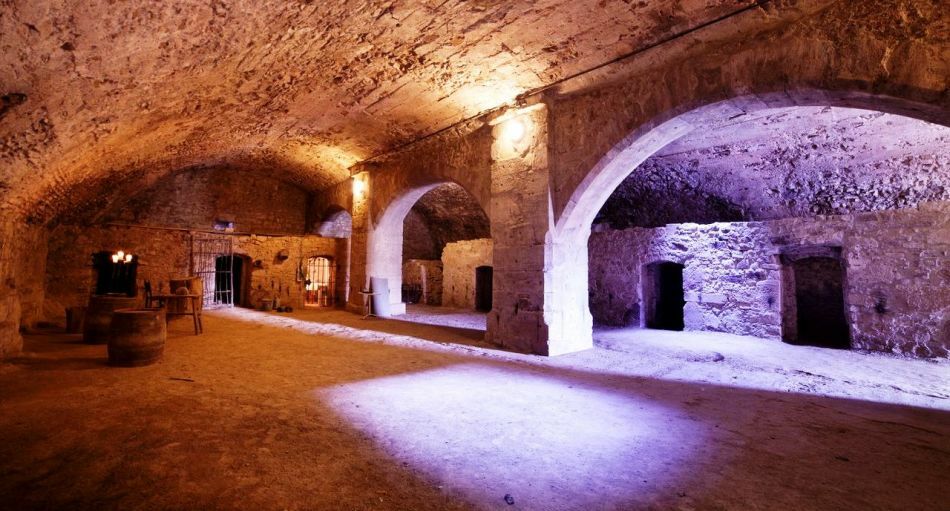 Hohenbaden Castle in Baden-Baden, Germany
Hohenbaden Castle in Baden-Baden, Germany Lichtentaler Allee is the famous Baden Promenade, which is mentioned in many literary works of the XIX century, for example in Dostoevsky's novel The Gambler. Lichtentaler Alley - part of the medical procedures of the old Baden-Baden.
At the end of the century before last, motor activity was considered an indispensable component of successful treatment, and the doctors enrolled patients in large numbers with numerous walks along the Baden promenade as the most well-maintained part of the city.
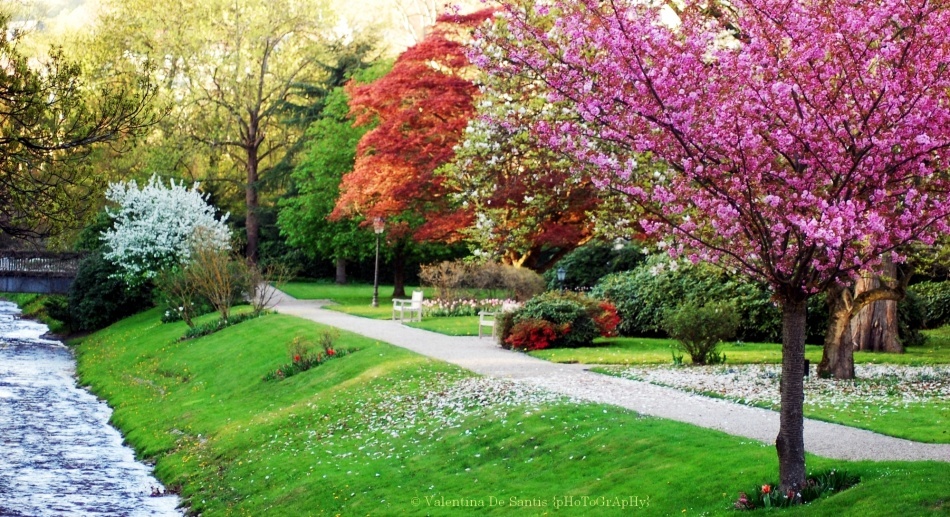 Lichtentaler Allee in Baden-Baden, Germany
Lichtentaler Allee in Baden-Baden, Germany The most beautiful cities in Germany
Frankfurt is the financial capital of Germany, surprisingly combining old medieval buildings and skyscrapers of the business center.
 Frankfurt, Germany
Frankfurt, Germany Hamburg is the second largest city in the country, the largest port( Hamburg is often called the "sea gate of Germany").In Hamburg, there are a lot of attractions, the old medieval town is very beautiful.
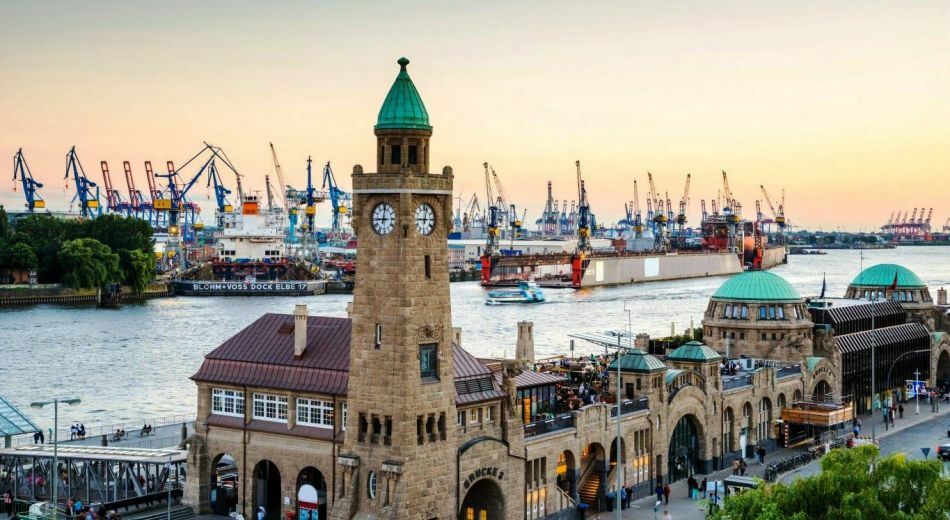 Hamburg, Germany
Hamburg, Germany Dresden - one of the most beautiful cities in Europe, a real pearl of Germany. Dresden is famous for its unique architecture, a huge number of historical buildings, museums, art galleries and theaters.
 Dresden, Germany
Dresden, Germany Stuttgart is the automobile capital of Germany, where the museums of the most famous automotive giants are located: Maybach, Mercedes, Porsche. Historical buildings are also present, since the city was founded in the Middle Ages.
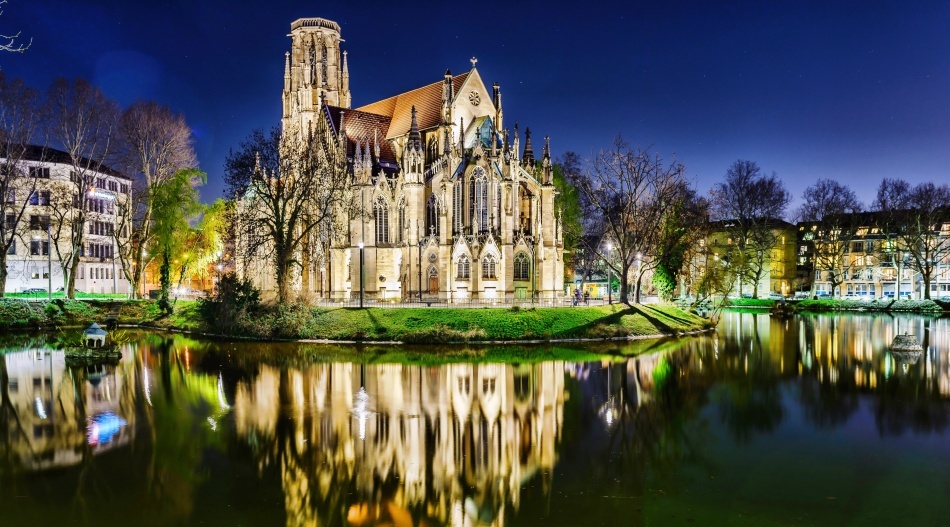 Stuttgart, Germany
Stuttgart, Germany Bremen is a cozy medieval city, familiar to us from the fairy tale about the Bremen musicians. This is truly a city-museum in the open air, where you will find many finds and amazingly beautiful places. Required for visiting lovers of the Middle Ages.
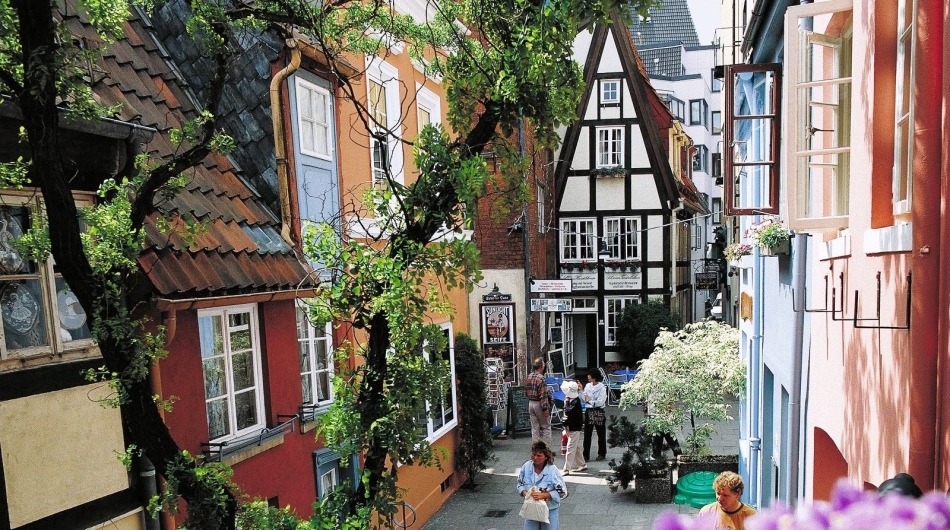 Bremen, Germany
Bremen, Germany Marburg is a city that seems to have come to earth from the Brothers Grimm book. Both studied at the local university, and most of their tales were written under the influence of local legends and folk legends.
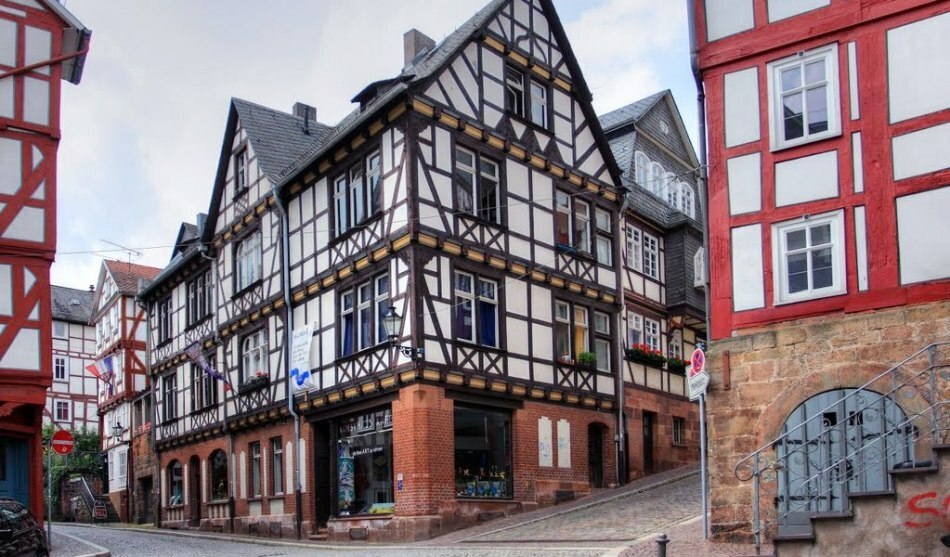 Marburg, Germany
Marburg, Germany Nuremberg is the main city of Germany during the Roman Empire, the medieval capital of the surrounding lands, the birthplace of Albrecht Durer, and the site of the famous Nuremberg trials - trials of Nazi criminals after the end of World War II.
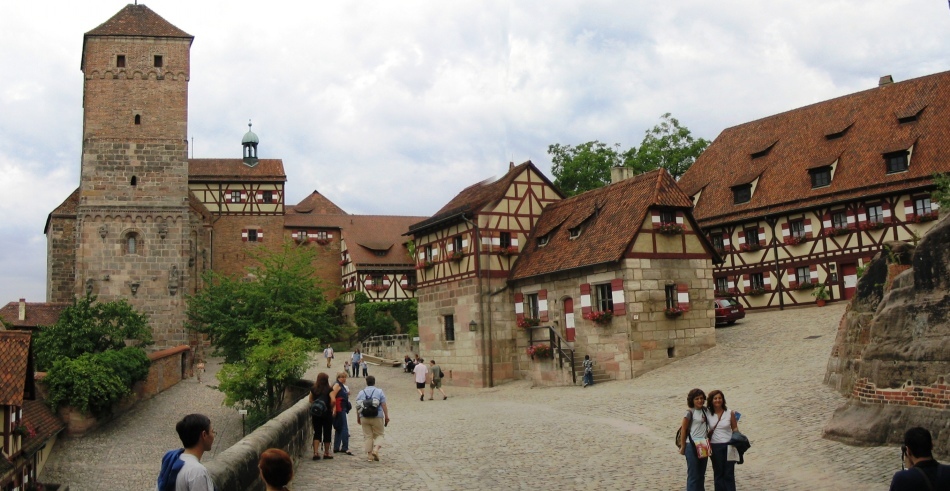 Nuremberg, Germany
Nuremberg, Germany Lübeck is a UNESCO World Heritage Site, a medieval city almost completely built of red brick, the former capital of the Hanseatic League. It is believed that it was in Lübeck that the recipe of marzipans - the traditional Christmas delicacy of Germany - was invented.
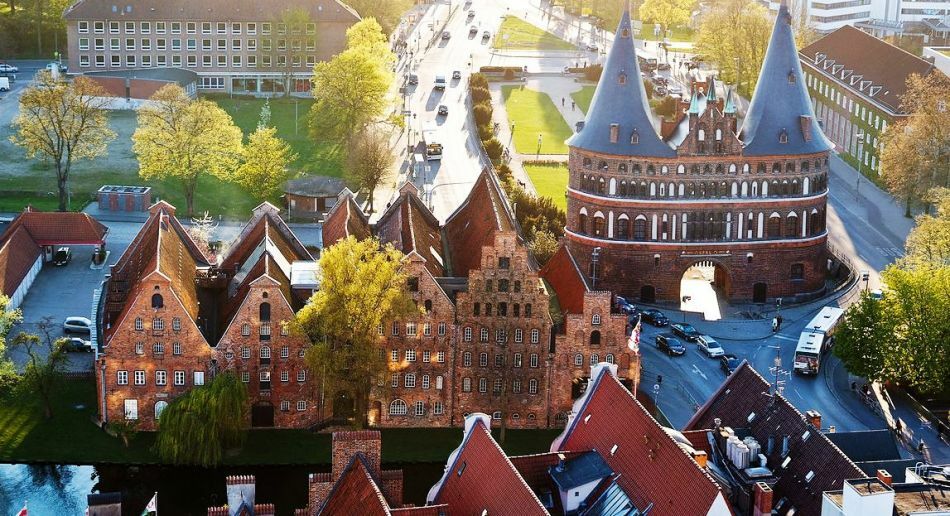 Lubeck
Lubeck Cruise on Rhine
One of popular kinds travel on Europe are river cruises : format travel allows see several cities simultaneously , on board is provided comfortable placement and power supply , is large selection variants by duration and saturation excursion program .
Home river Germany - Rhine , on shores which located many city , most significant historical castles and monuments culture. By to same shore Rhine very picturesque and diverse , so Rhine - one of main tourist routes water Germany .
Many tourist company Russian and CIS offer russkoyazychnye group cruises Rhine , at desire can find enough options , satisfying any requests. Examples of for cruises see here or here .
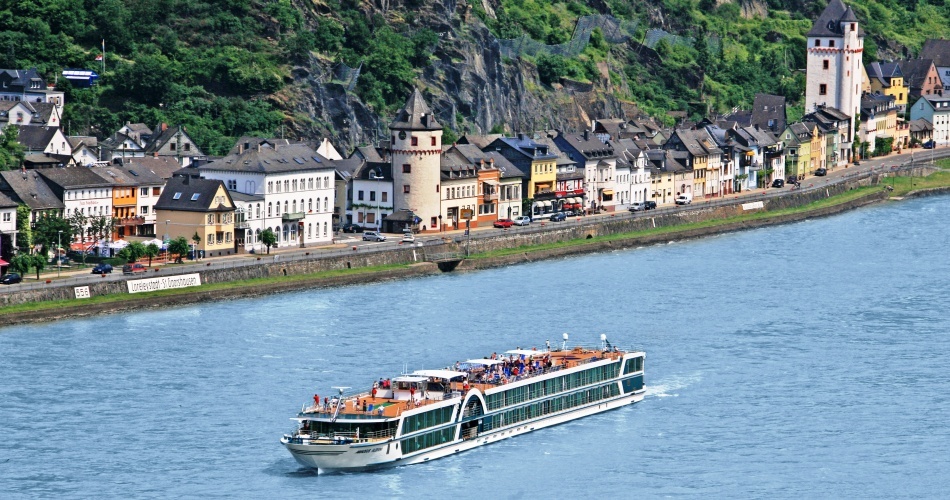 Cruise ship on the Rhine, Germany
Cruise ship on the Rhine, Germany 